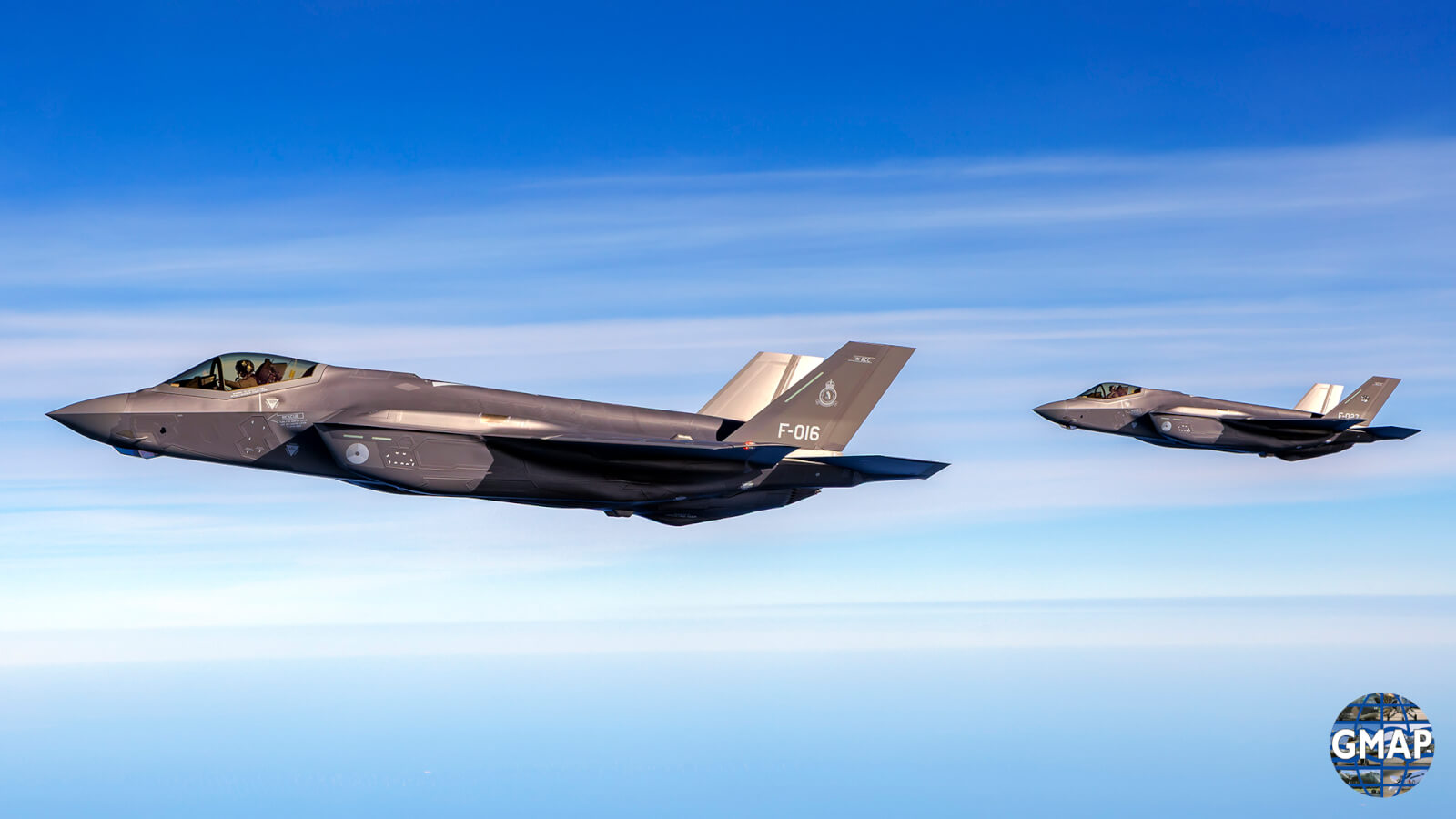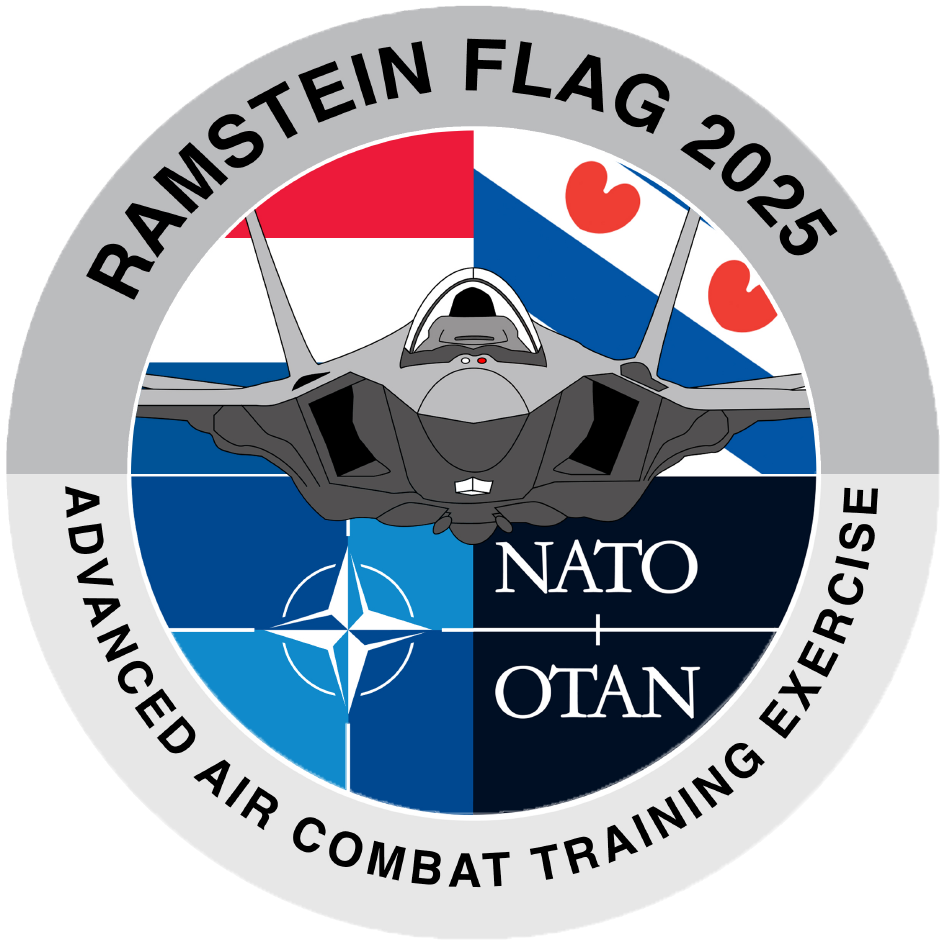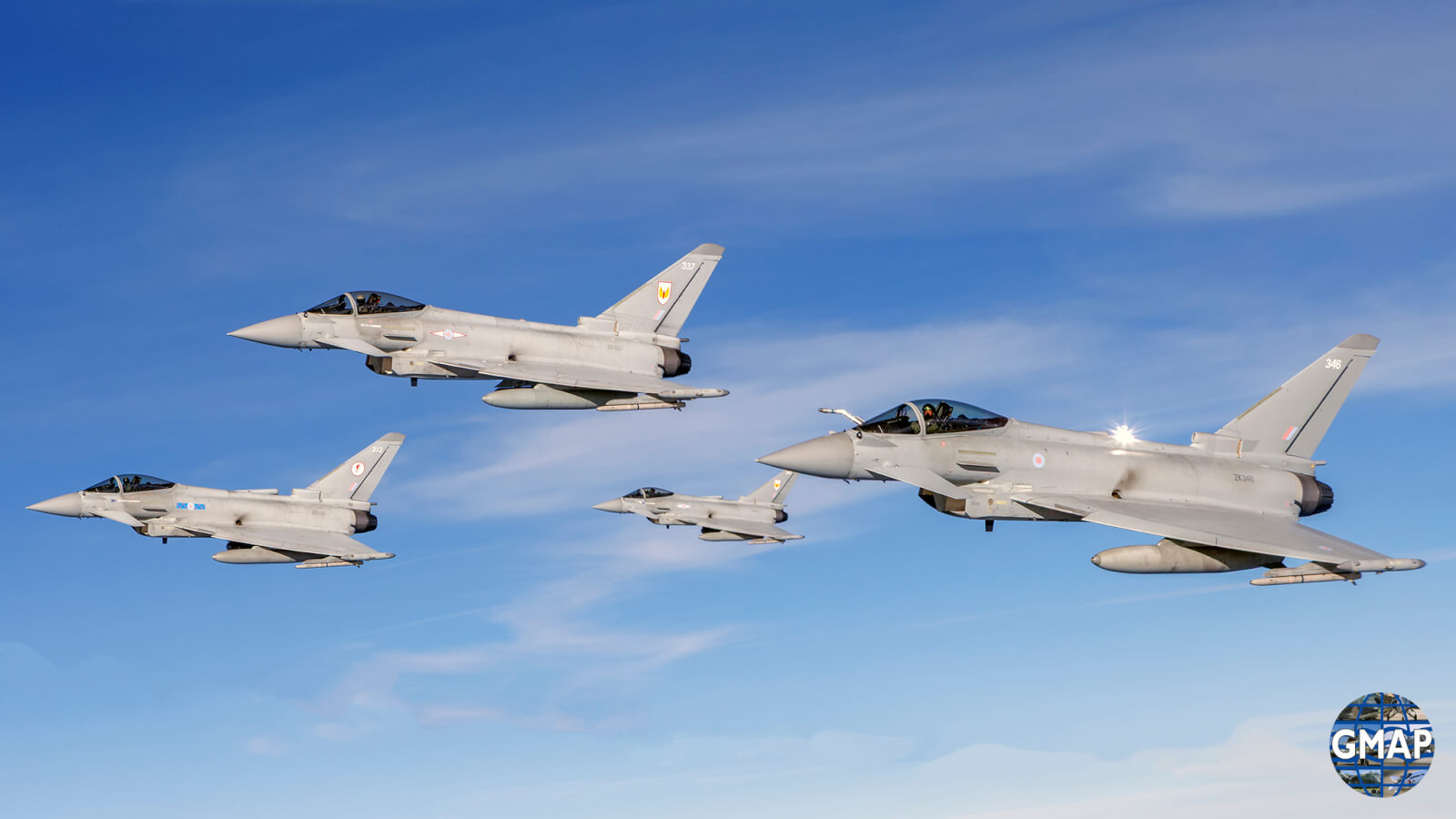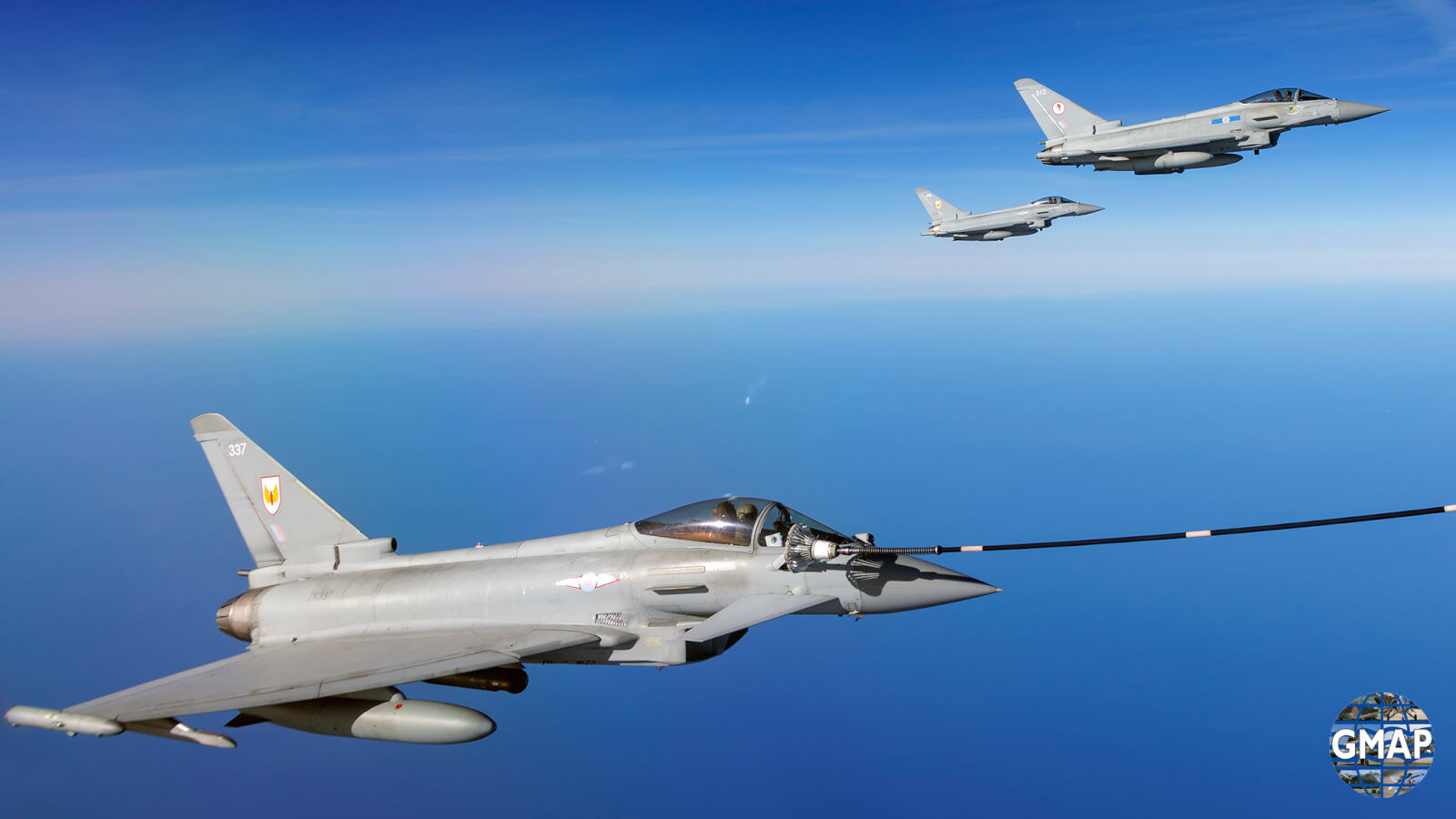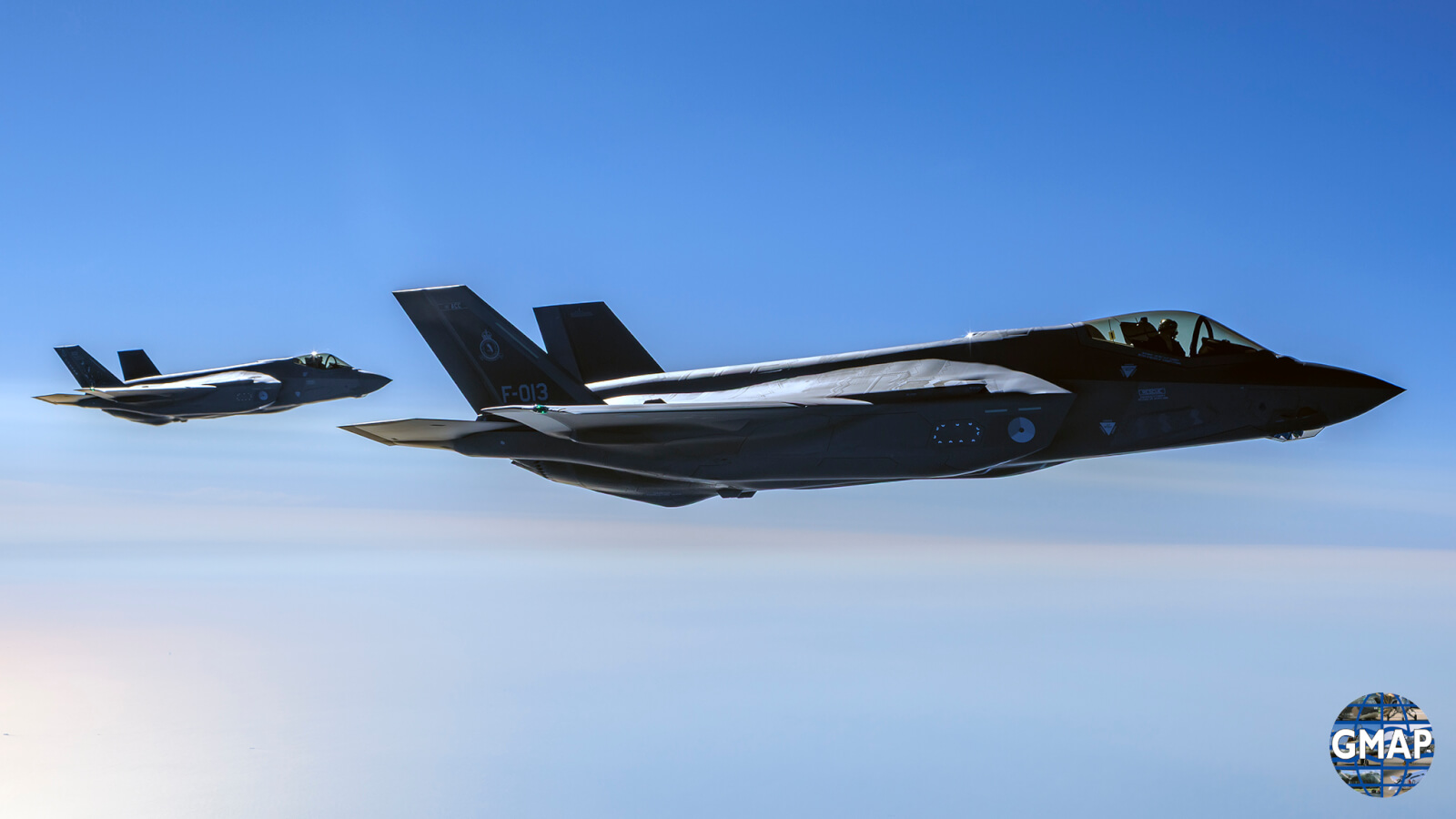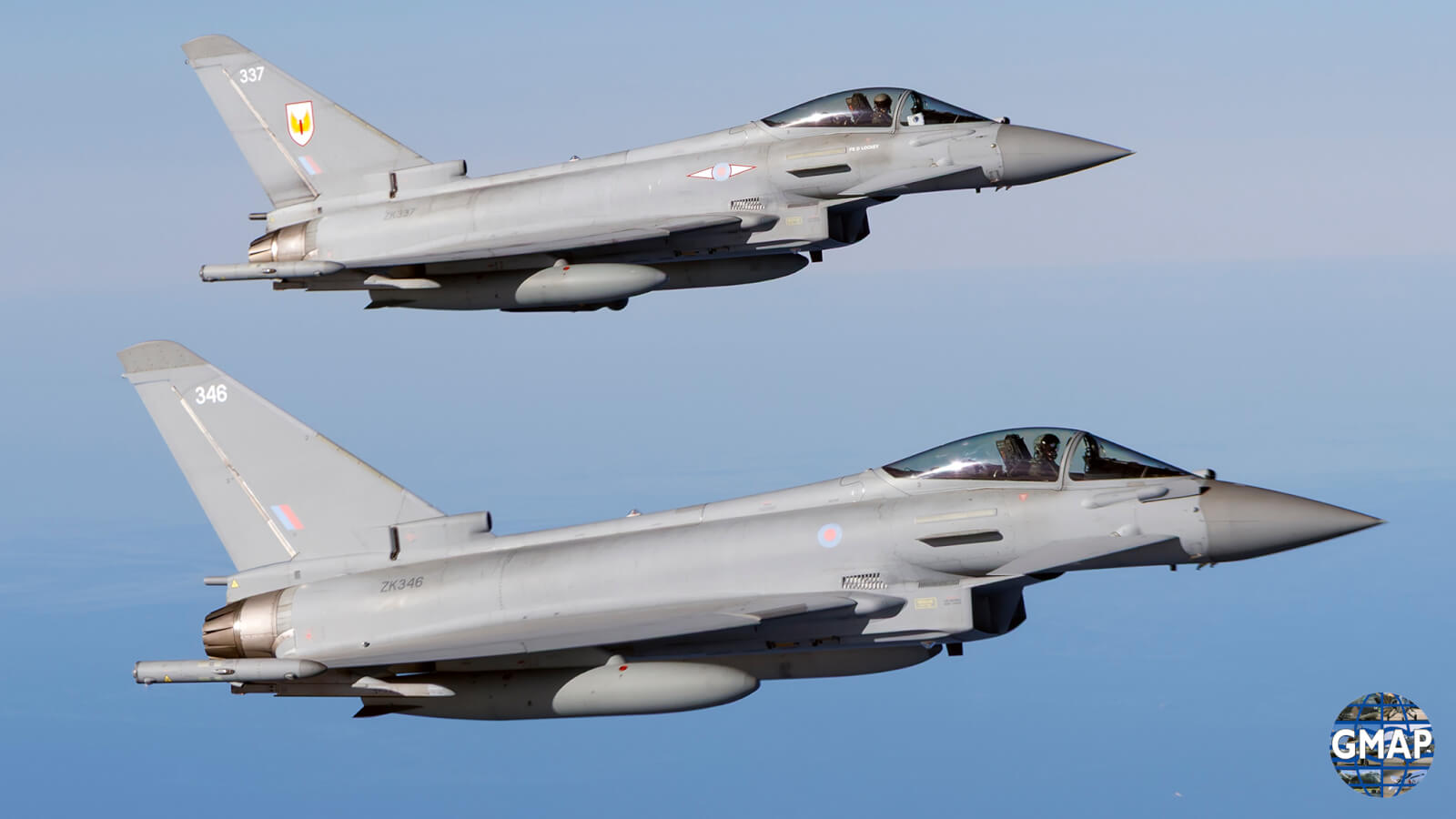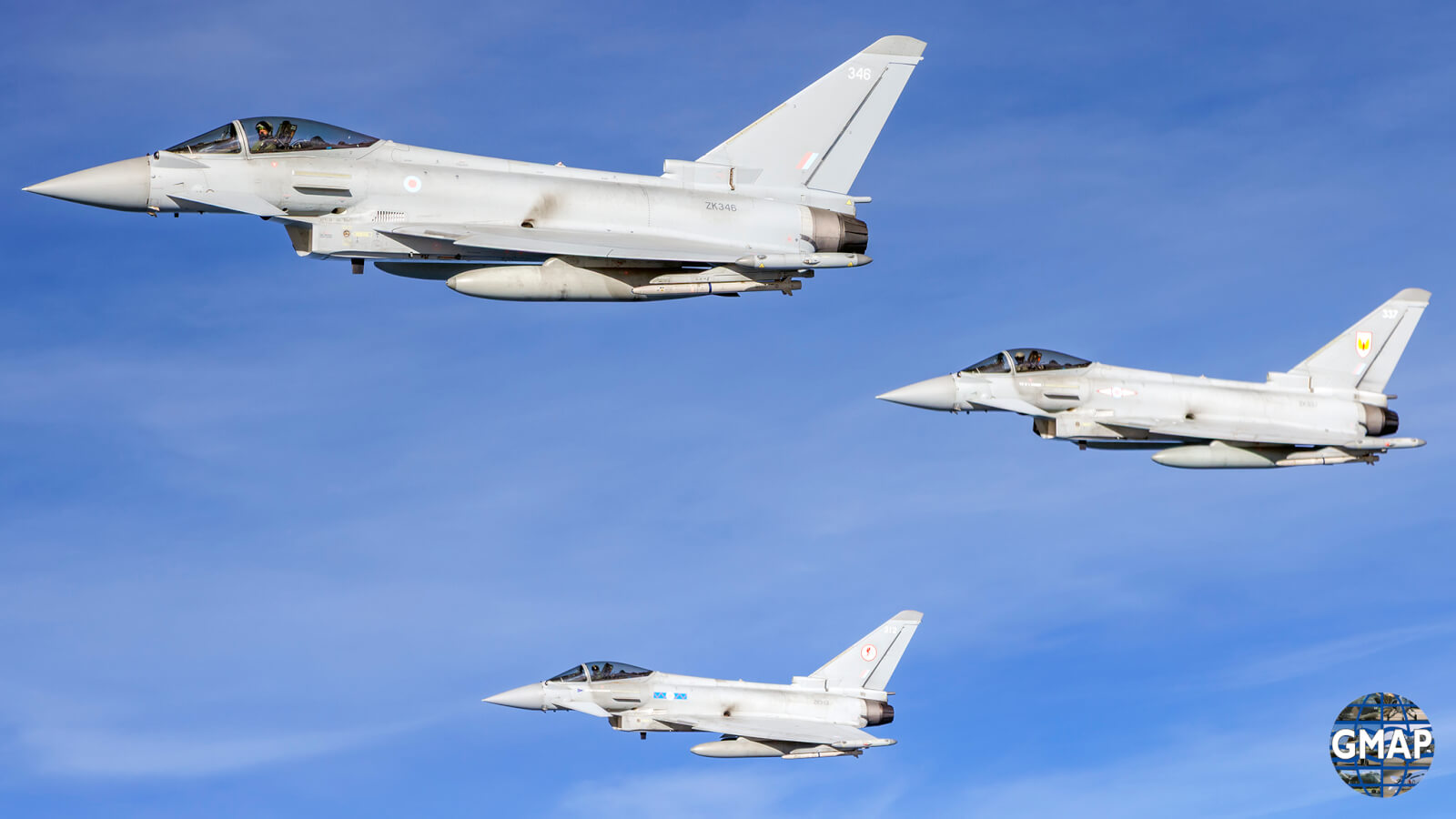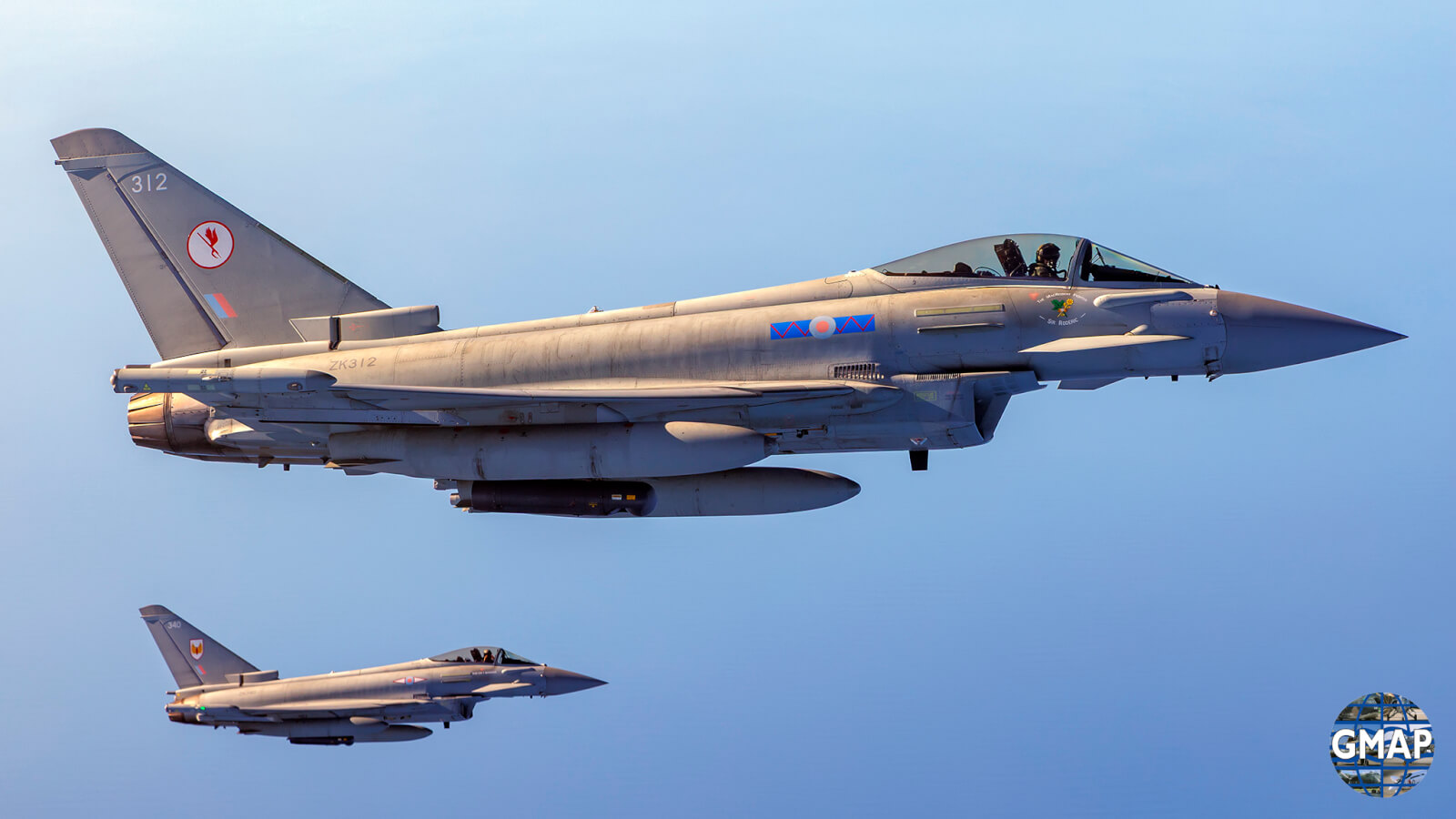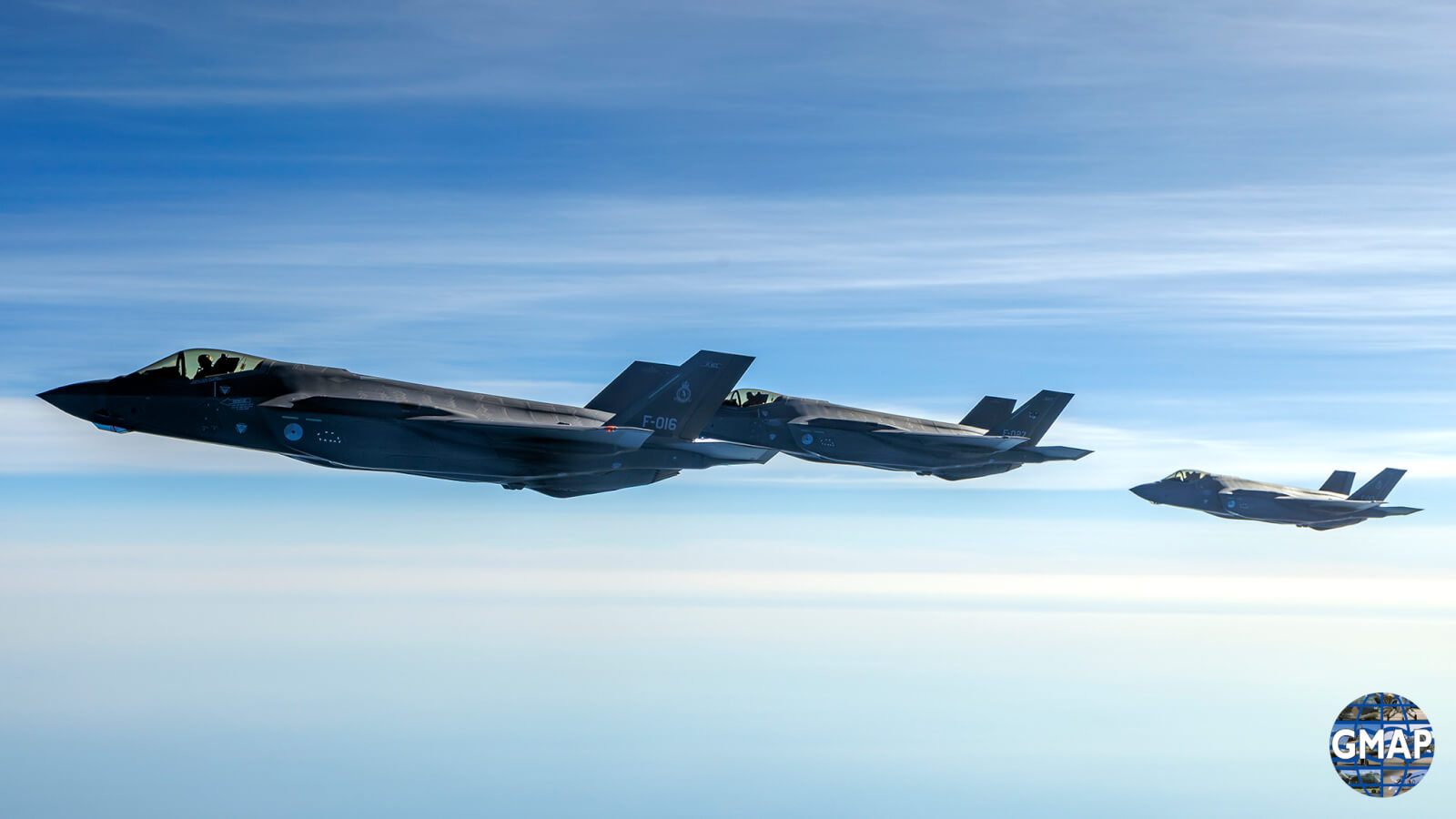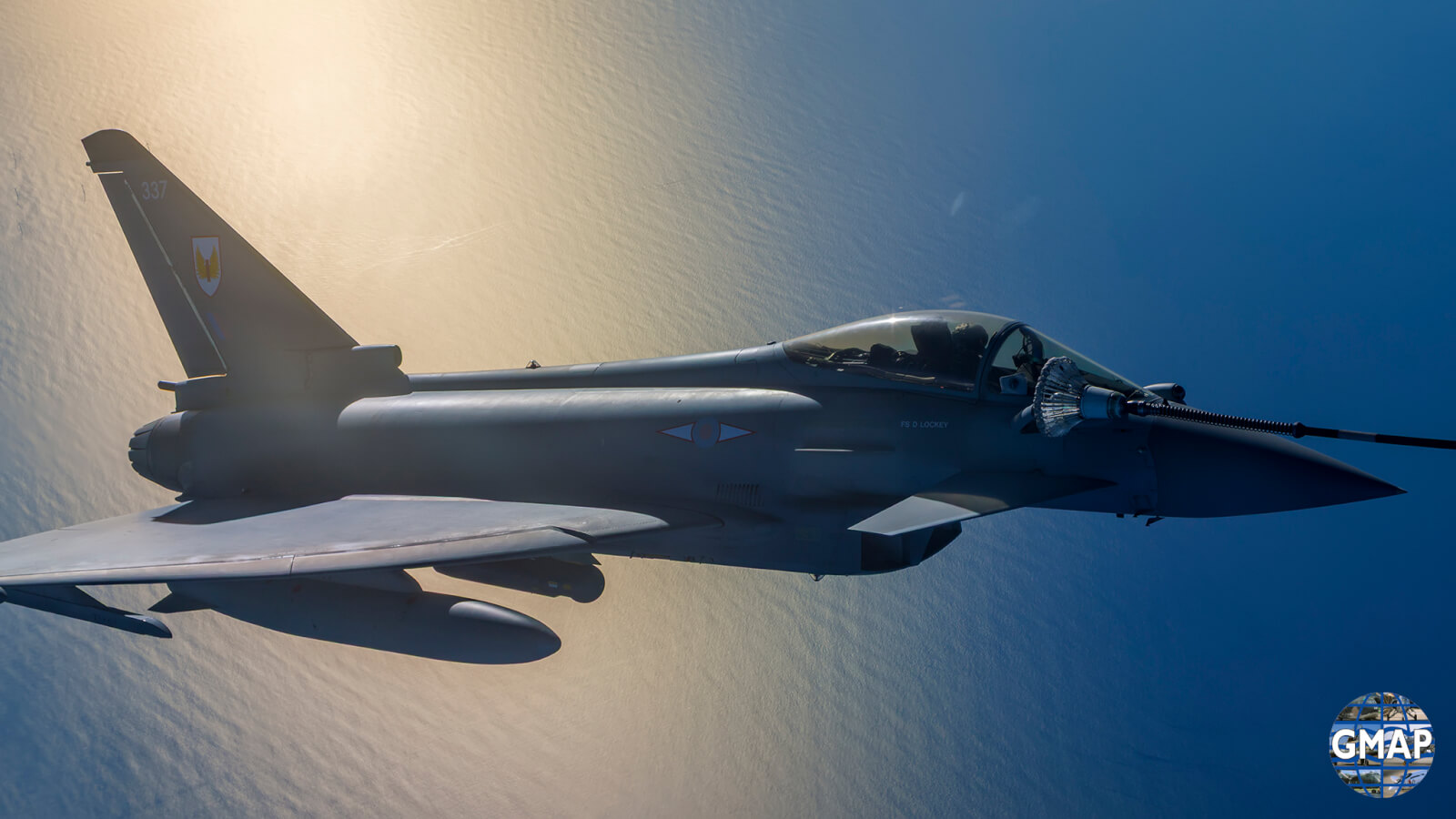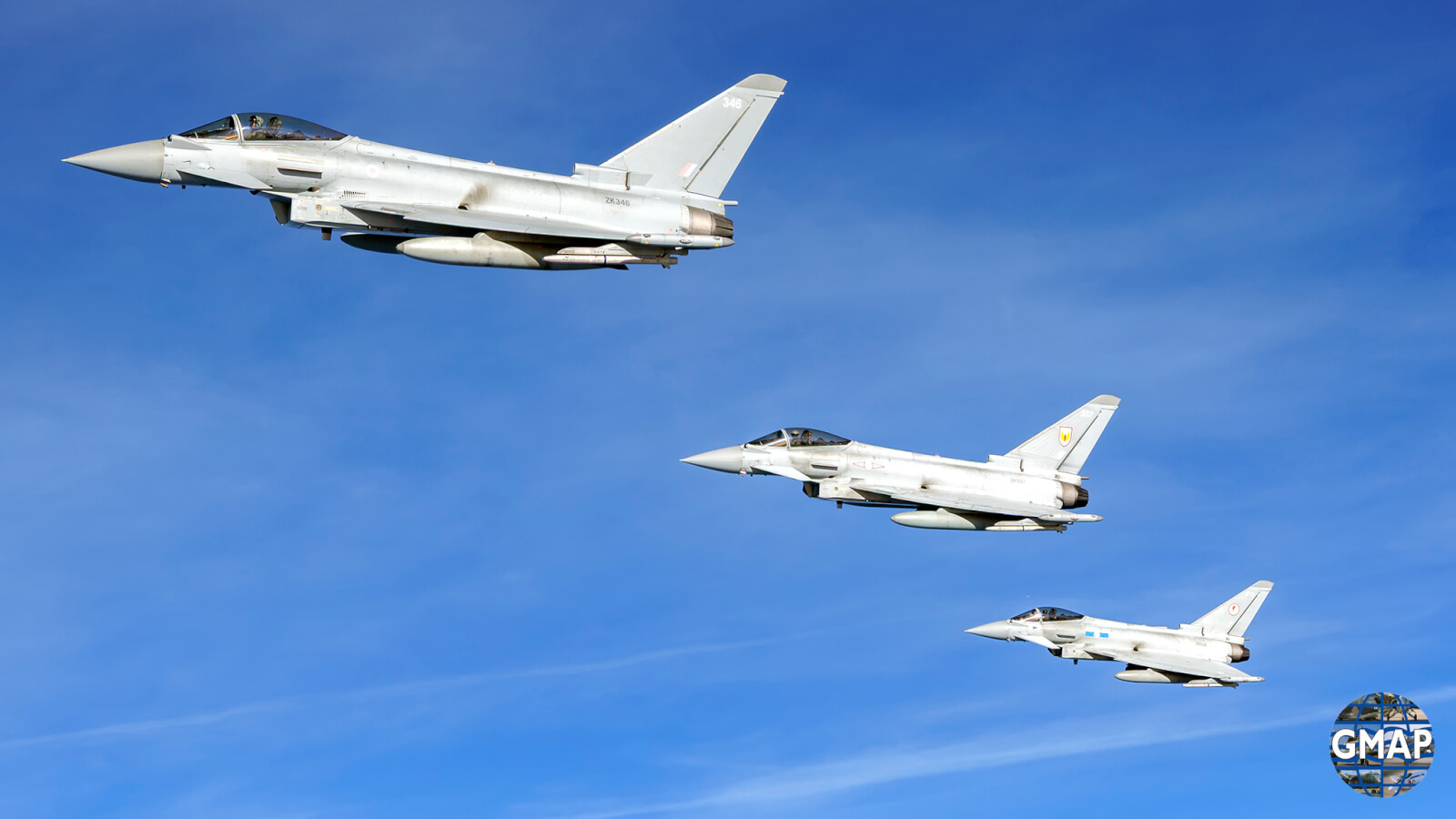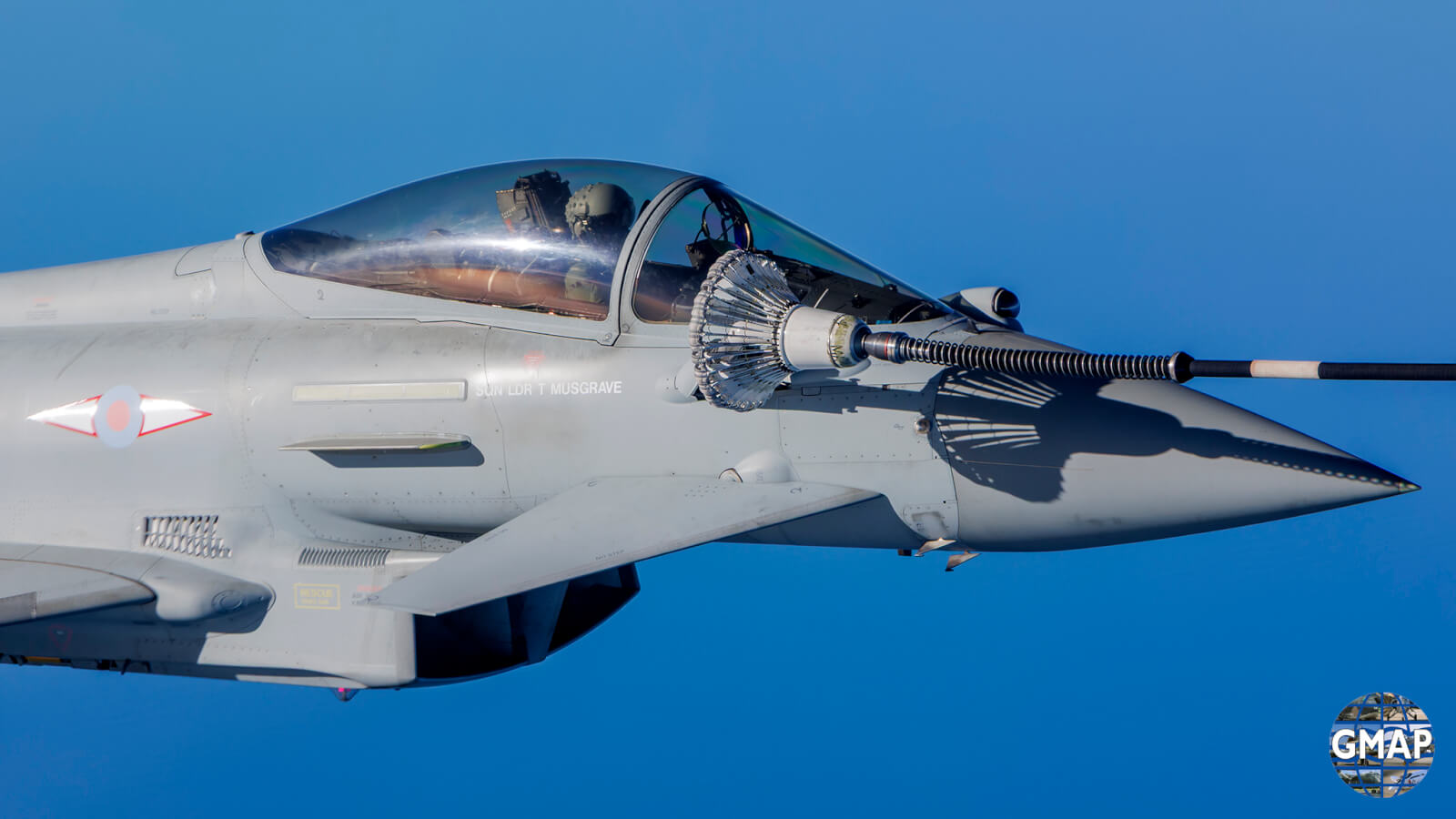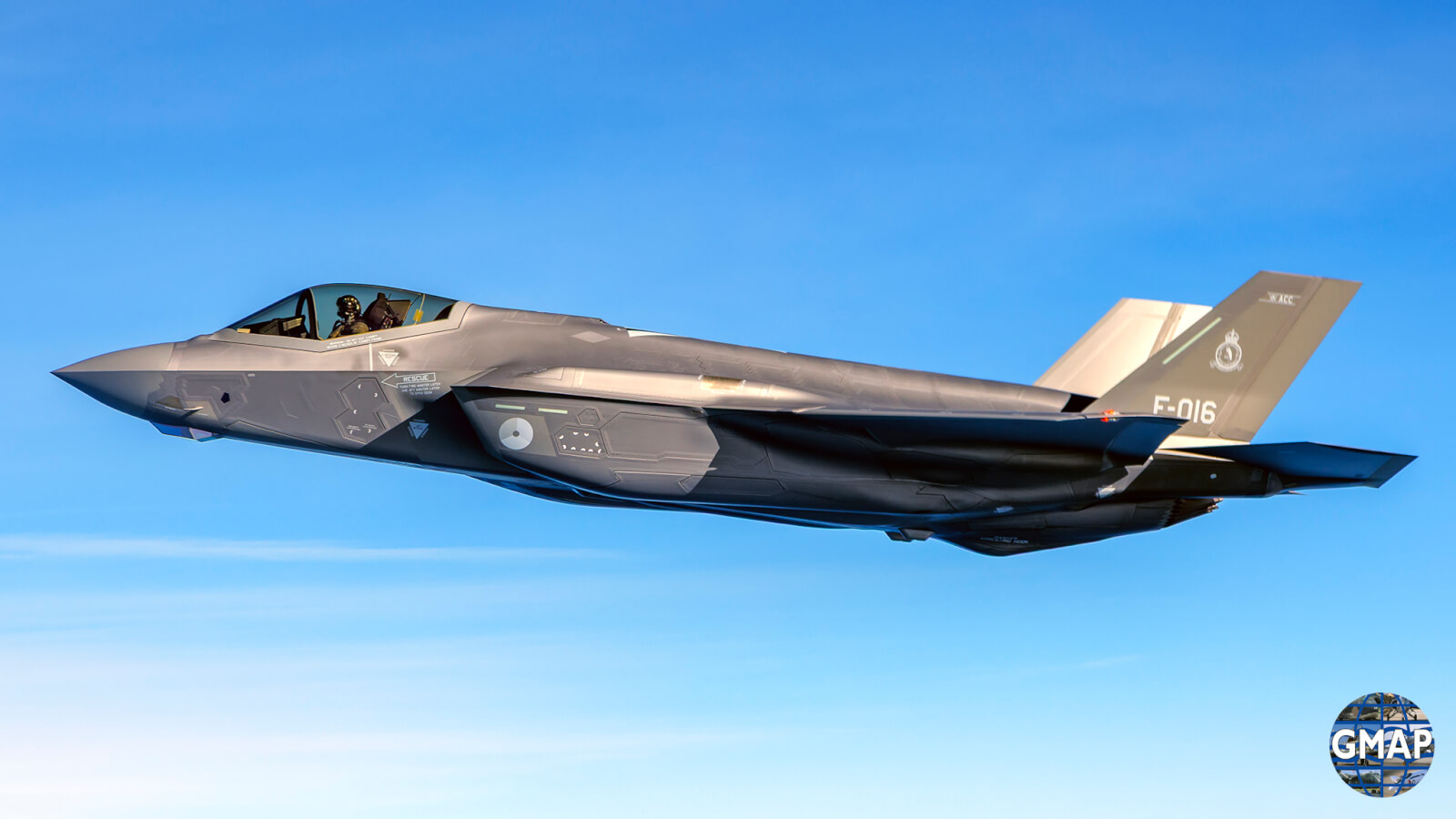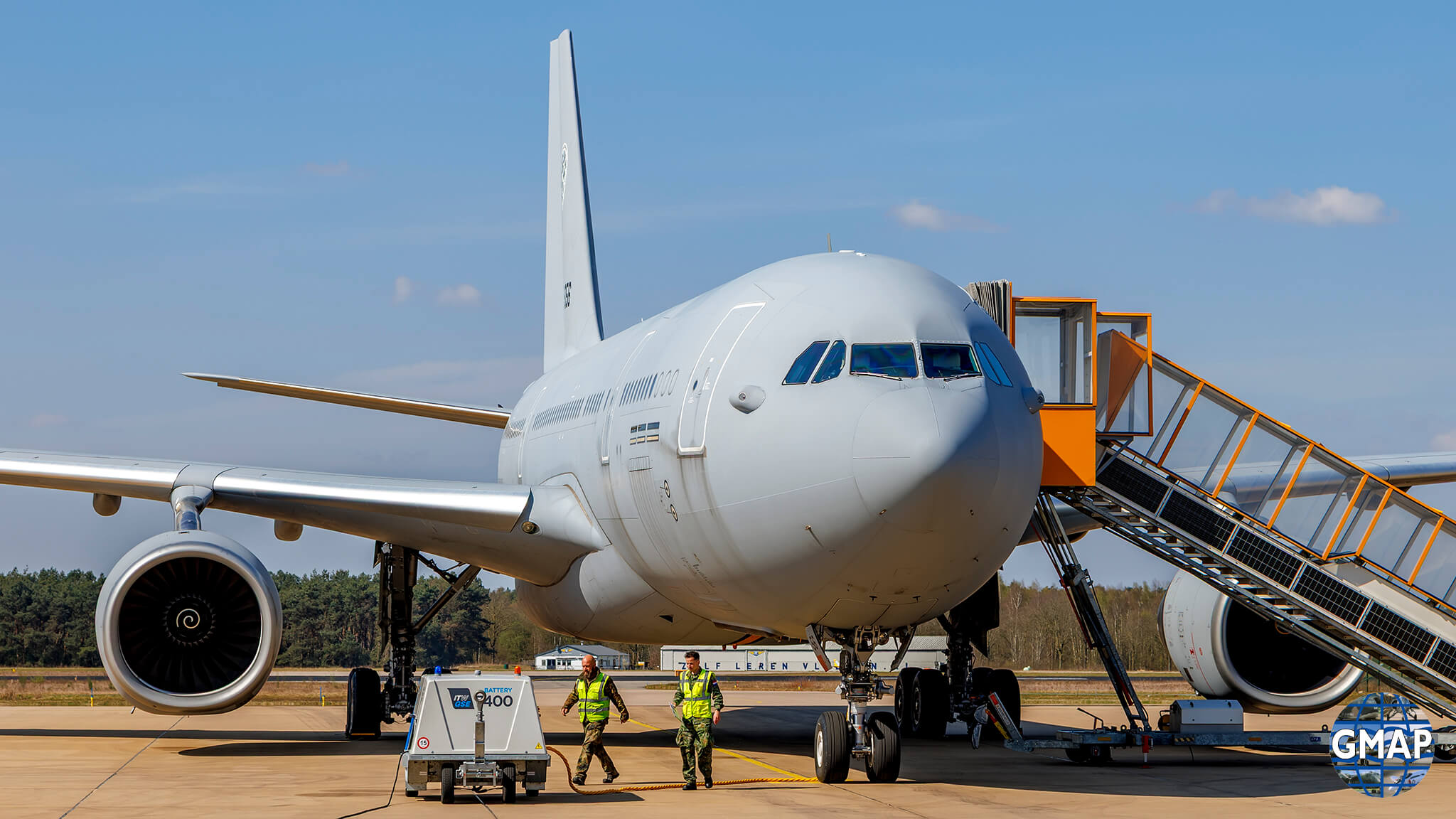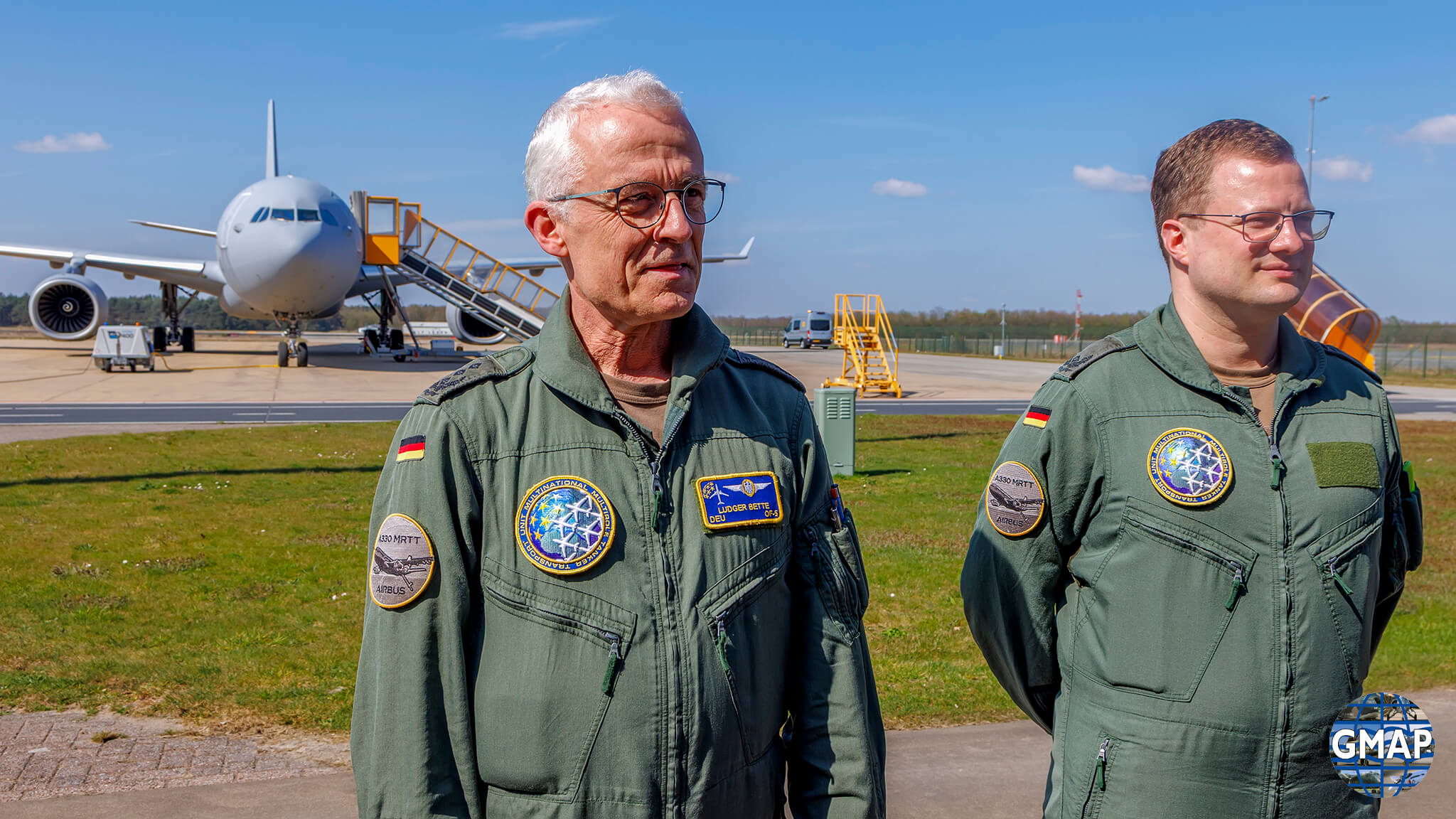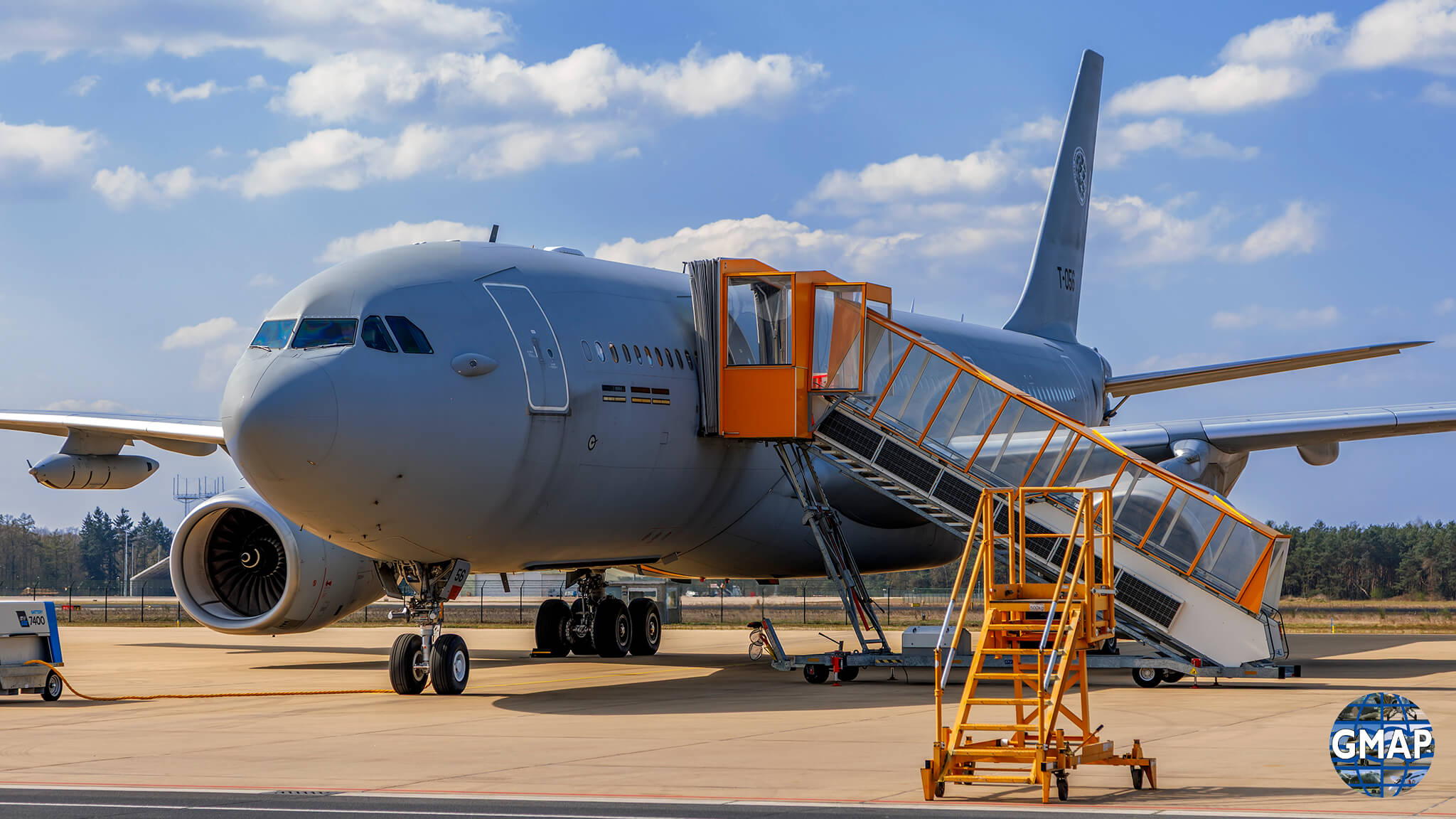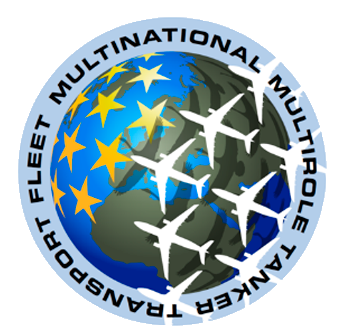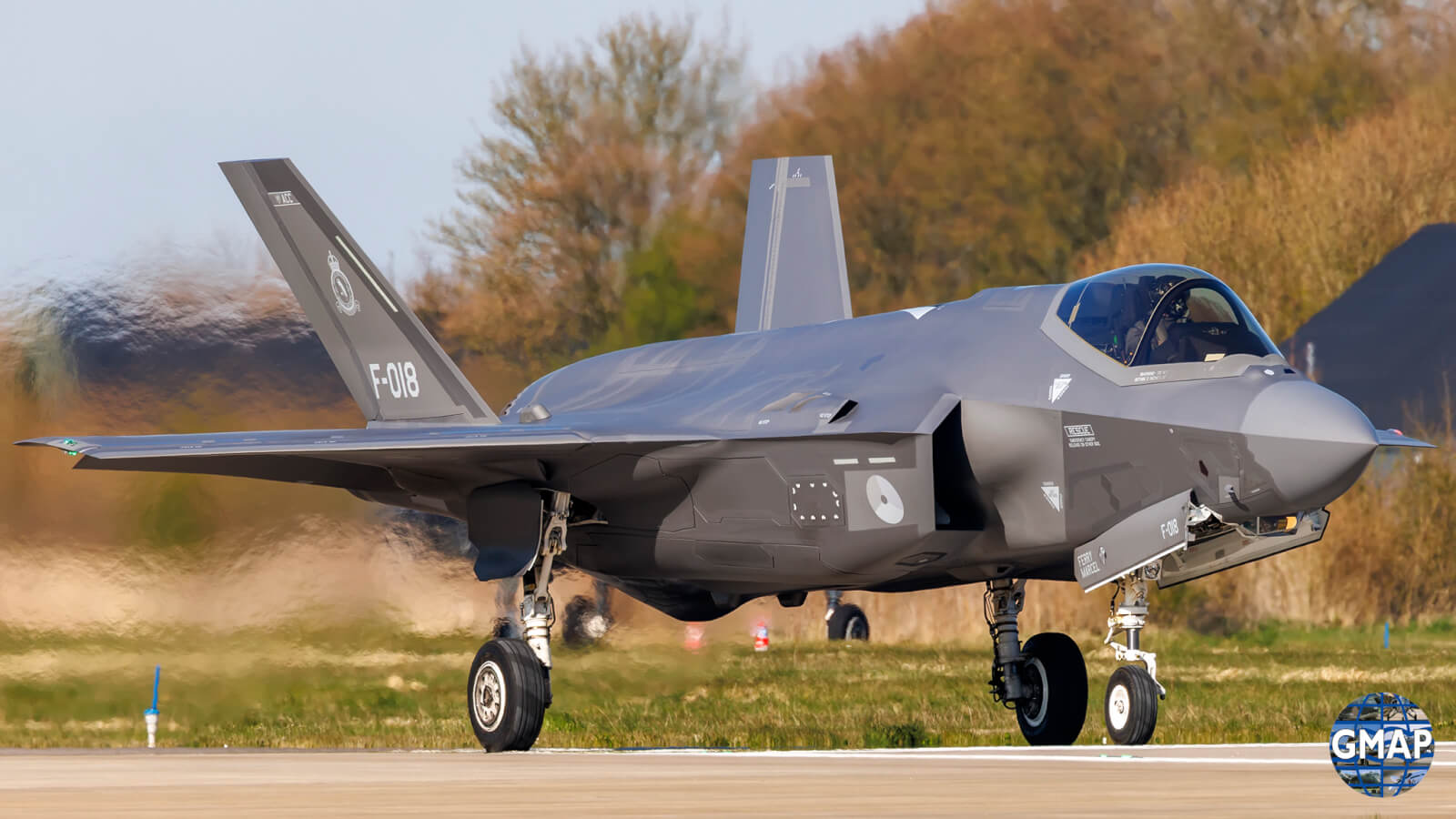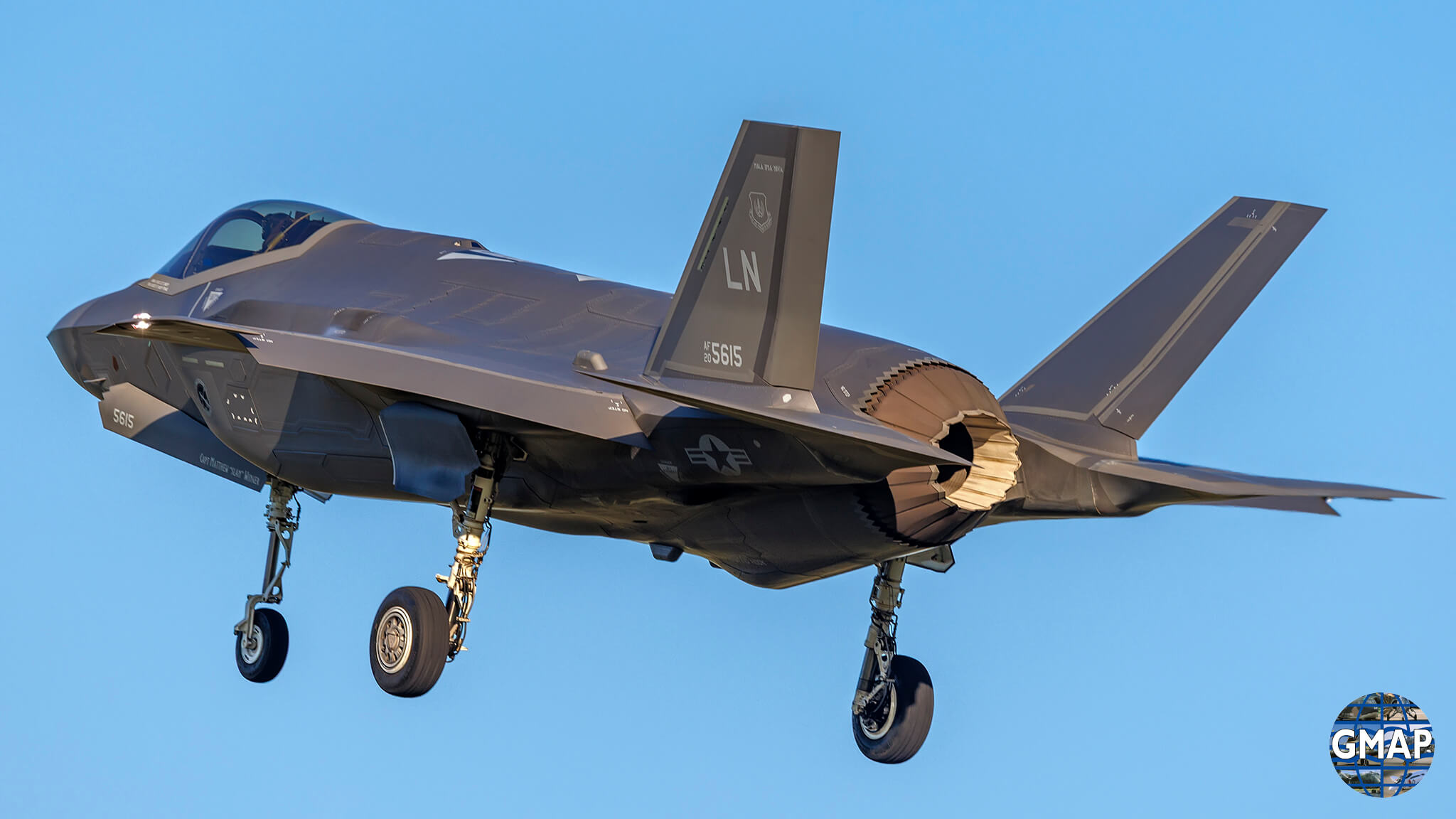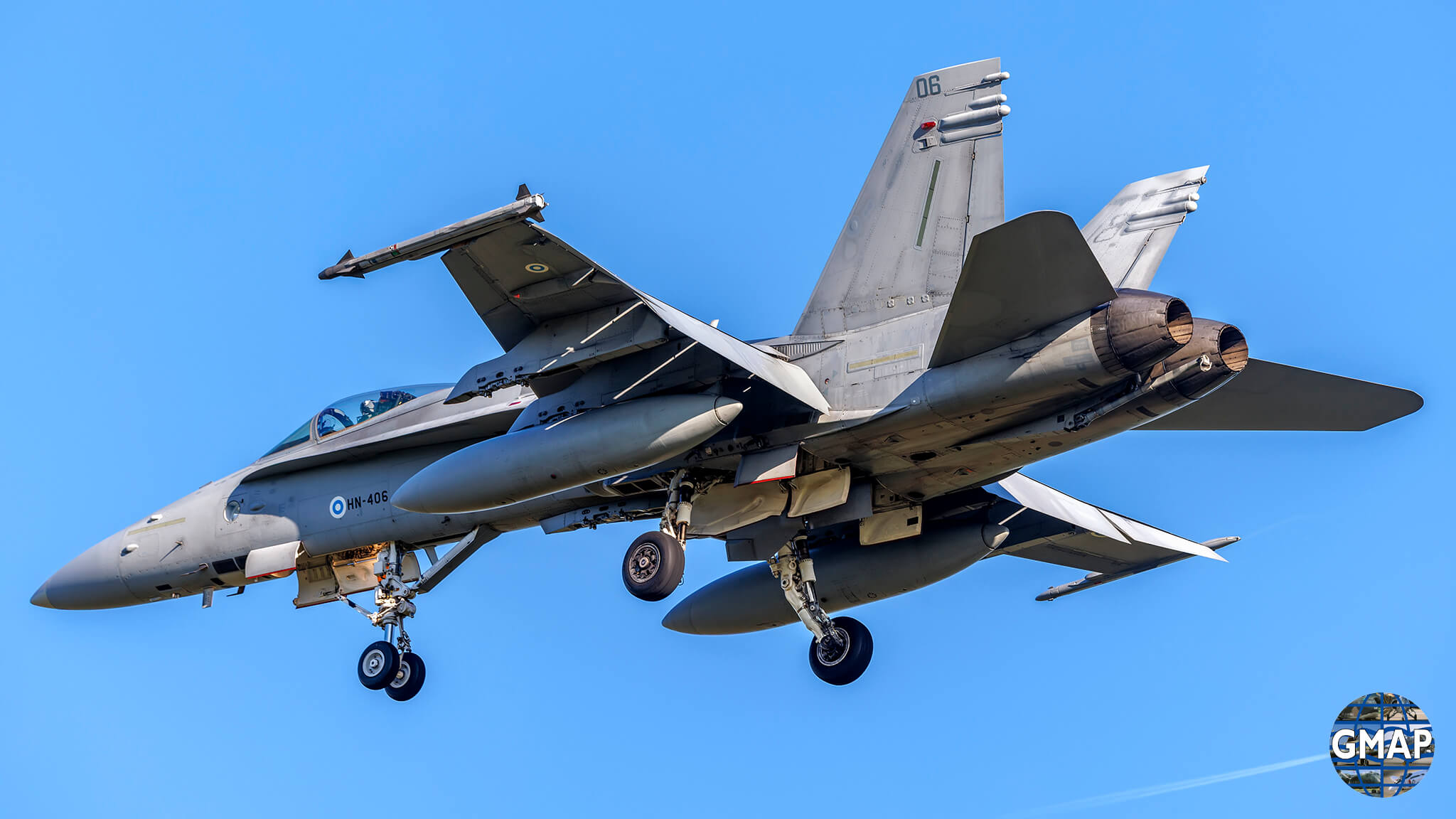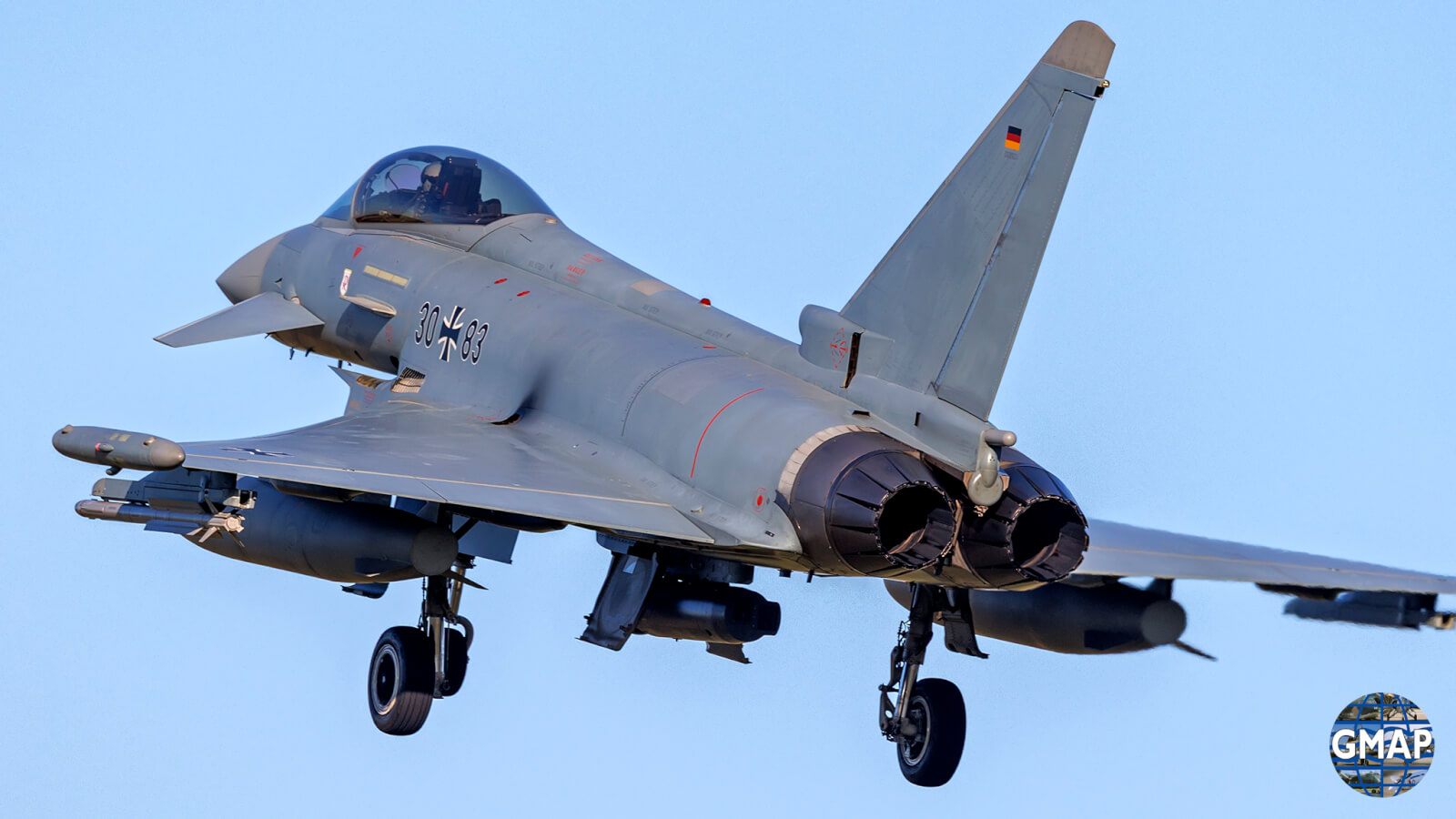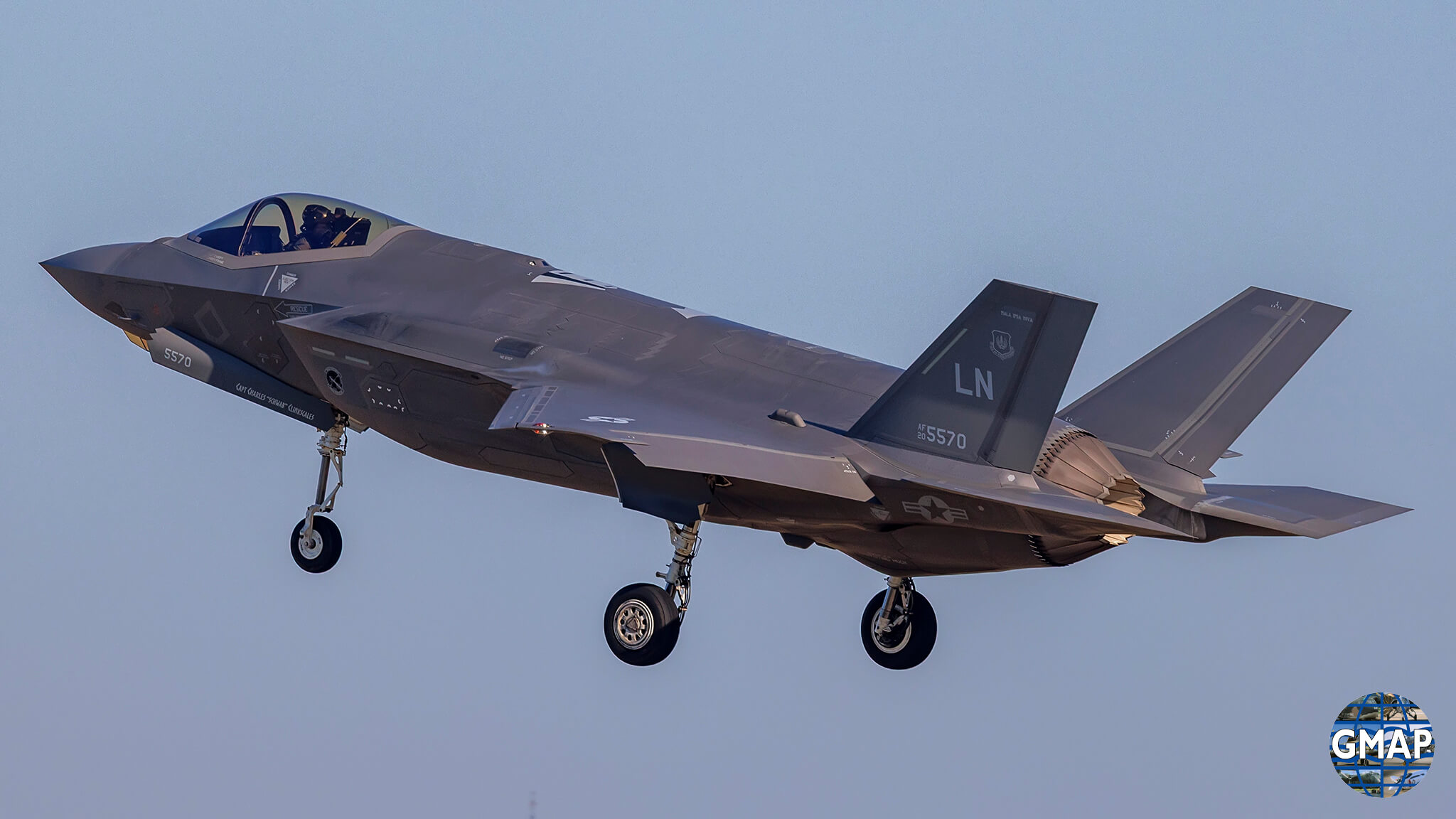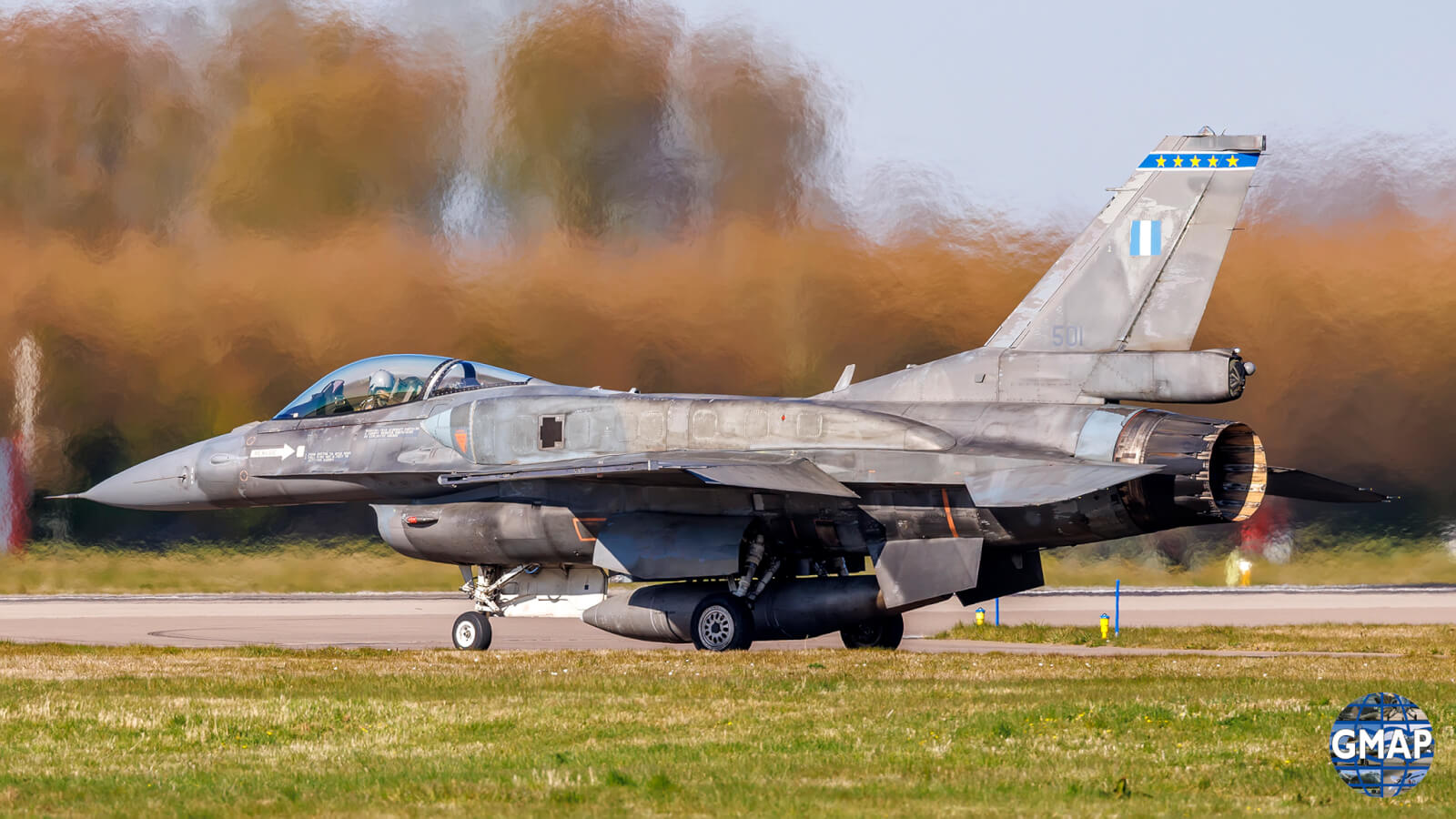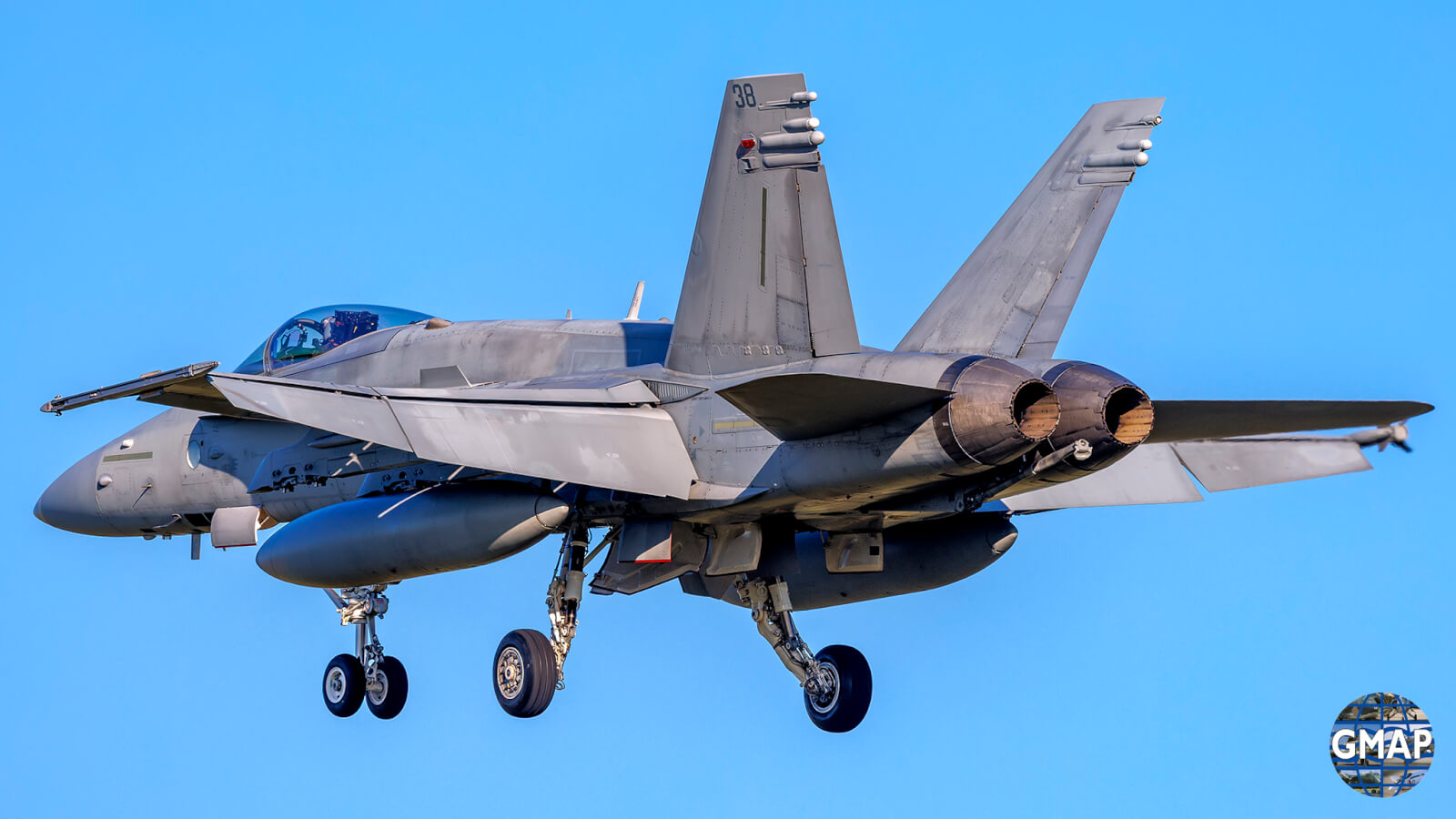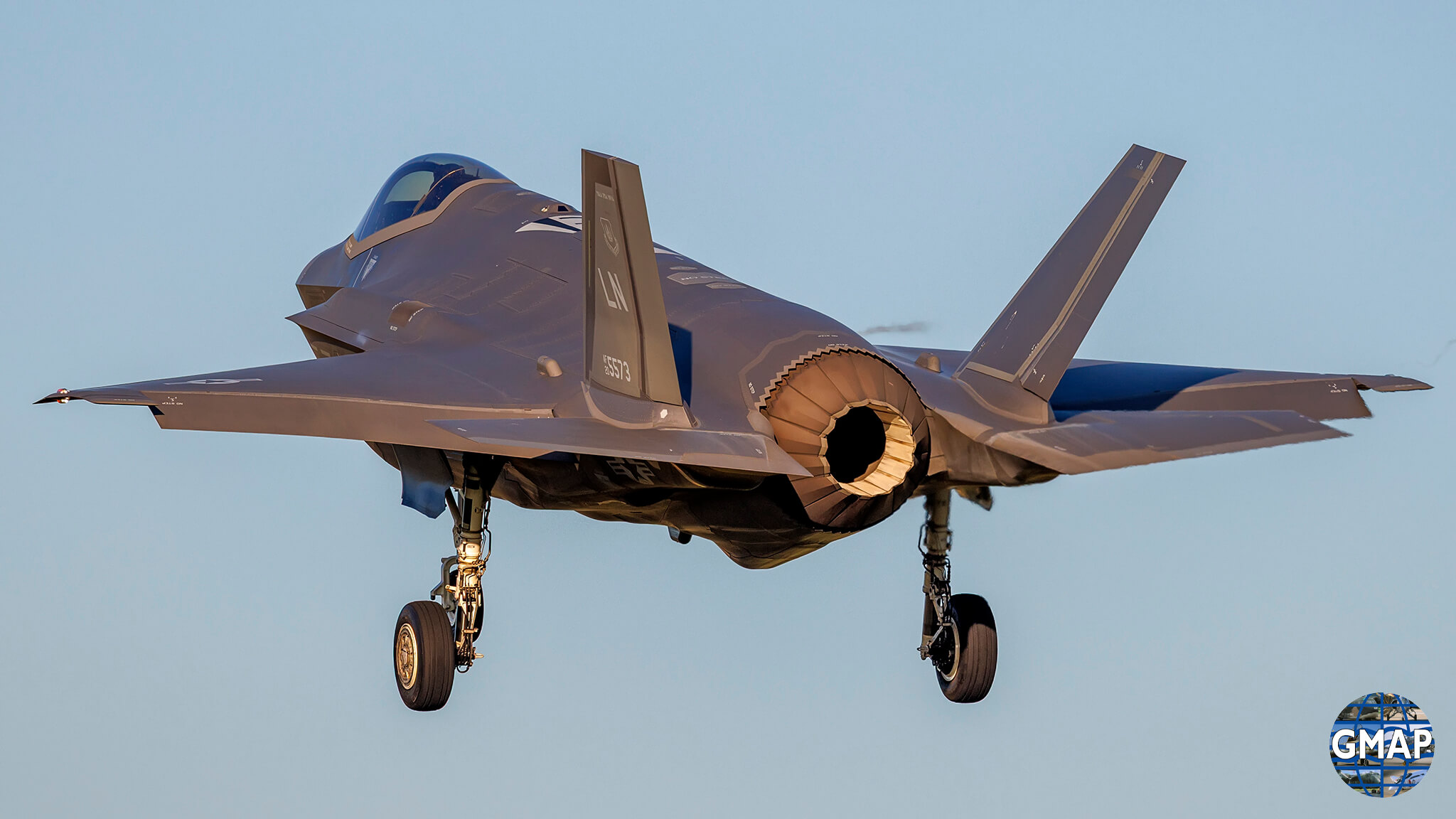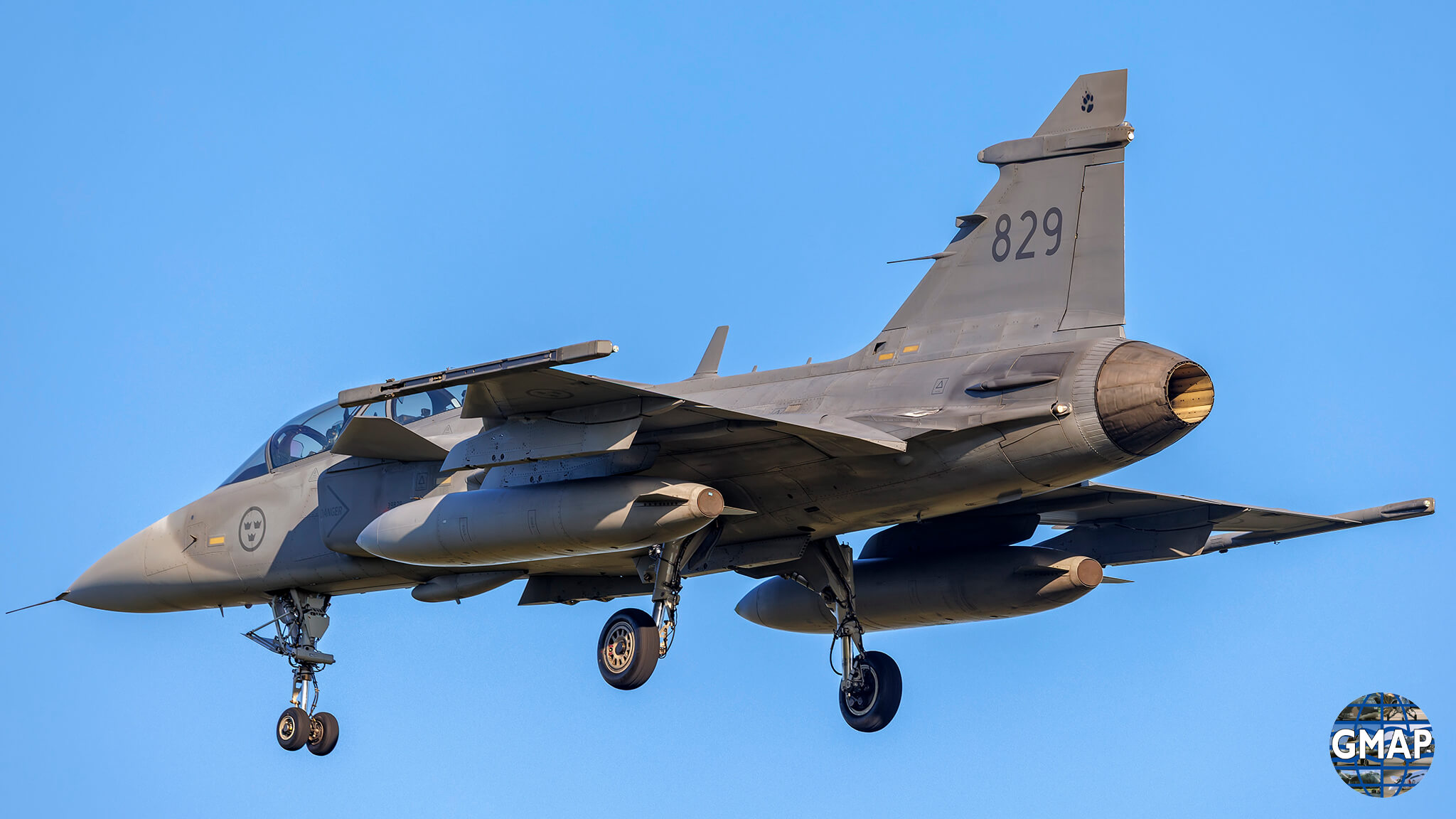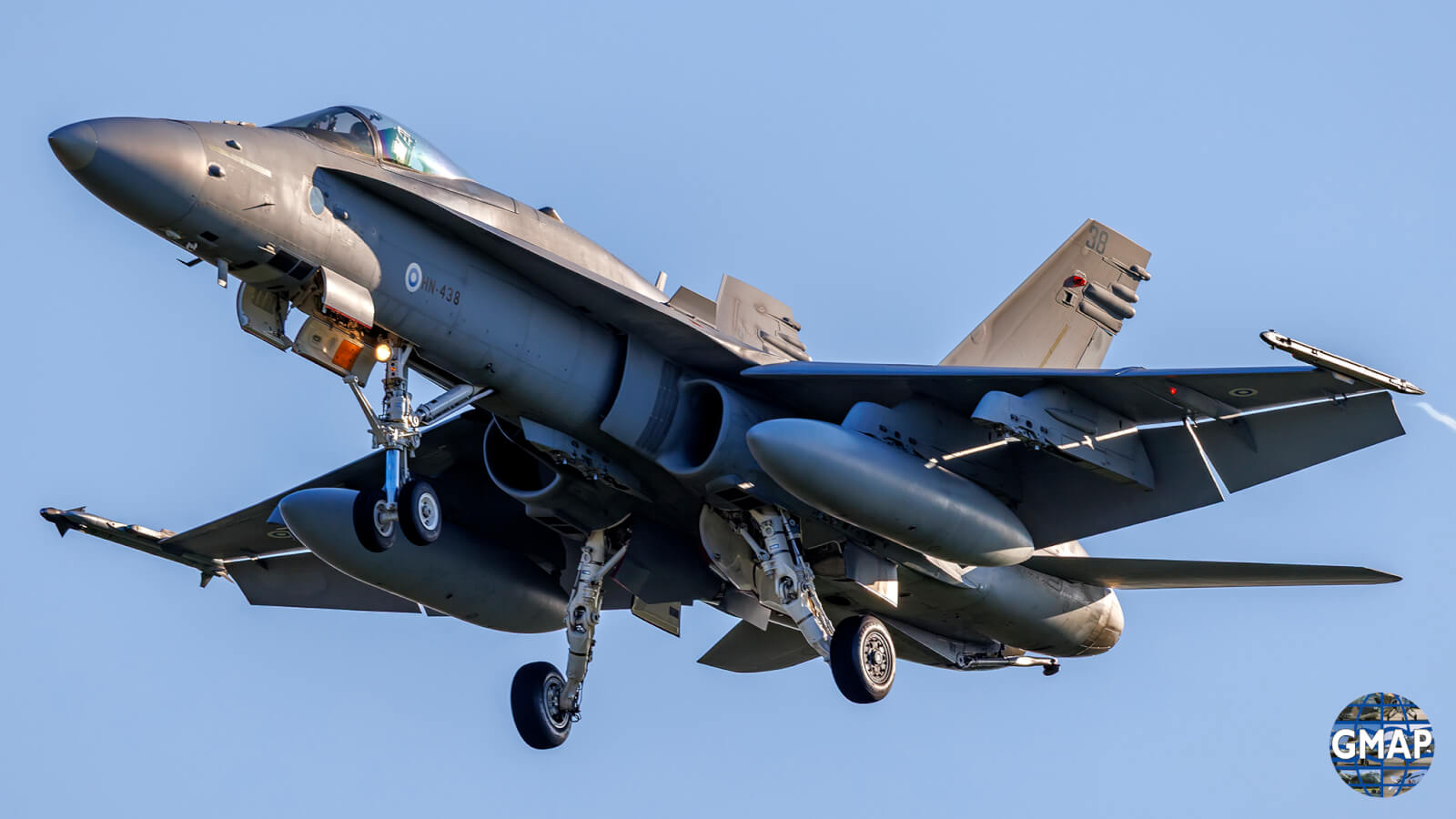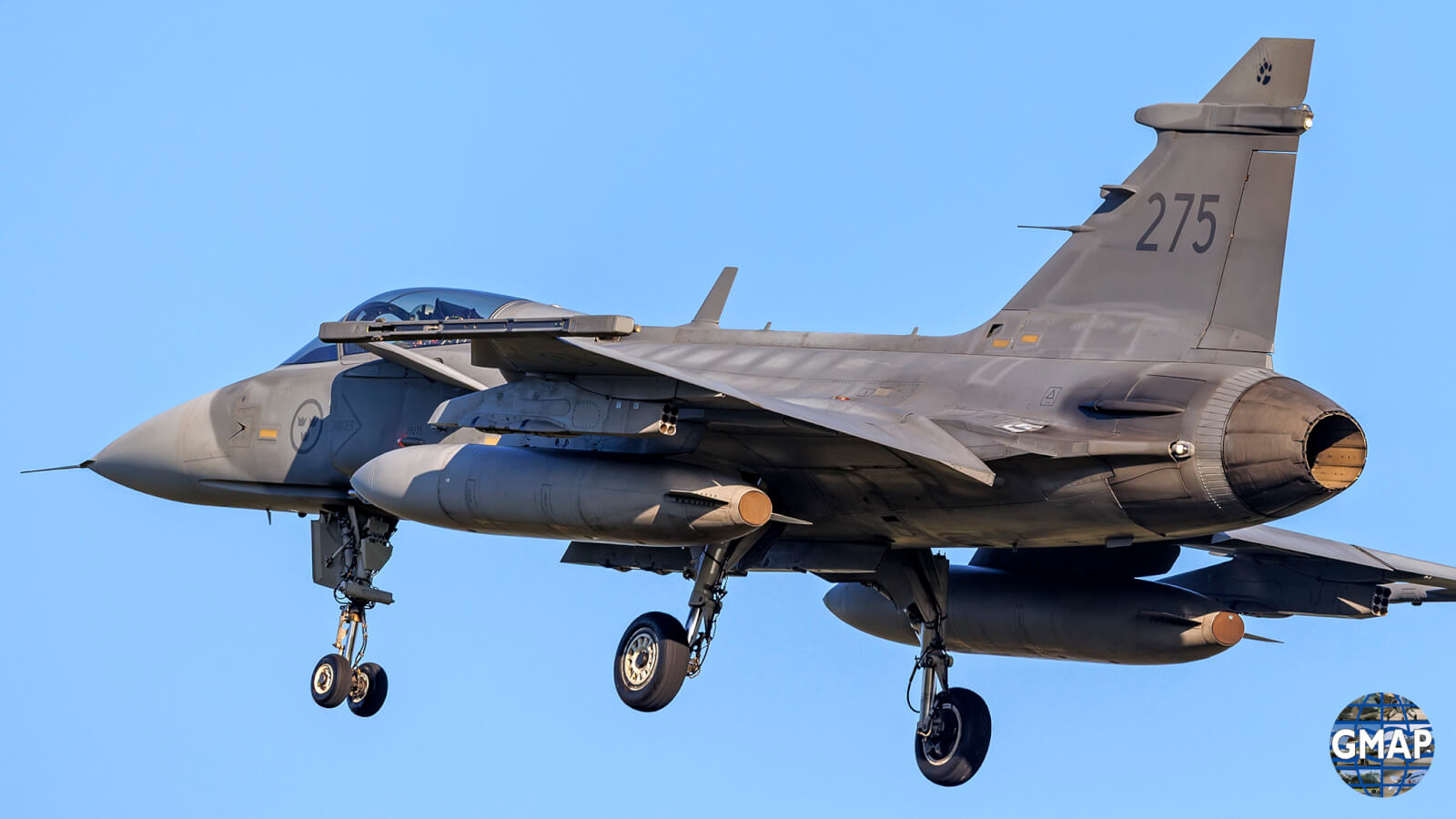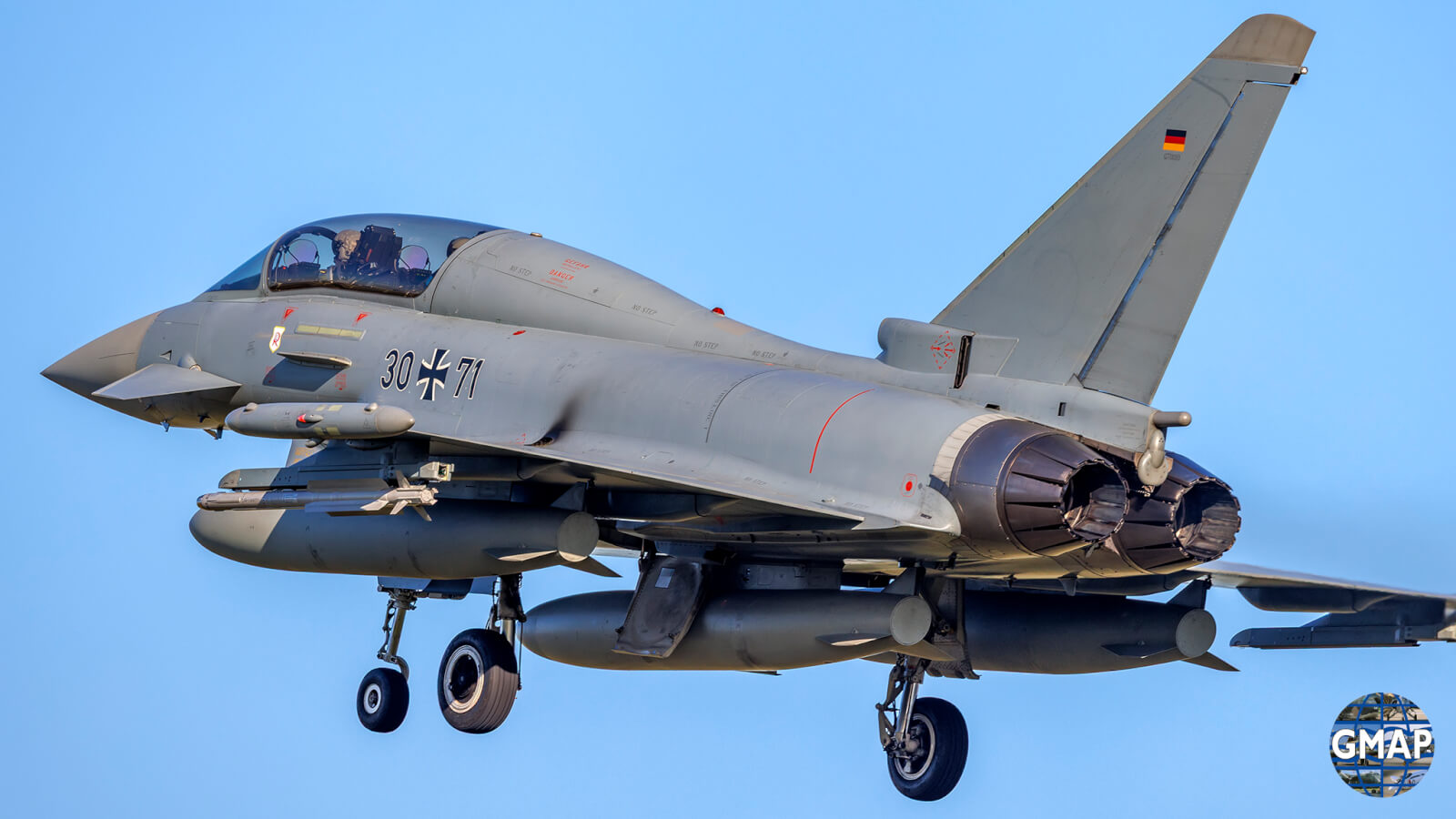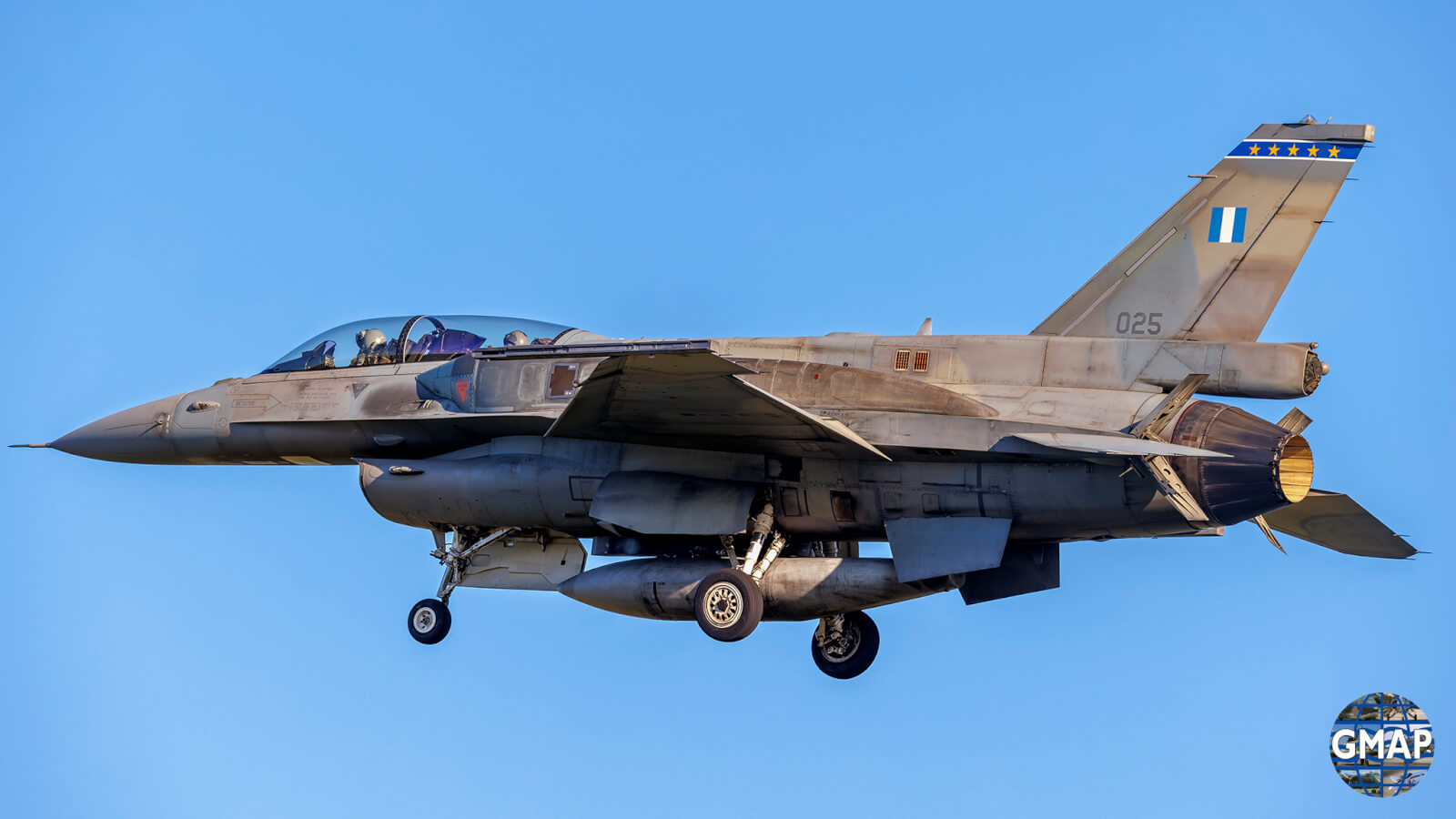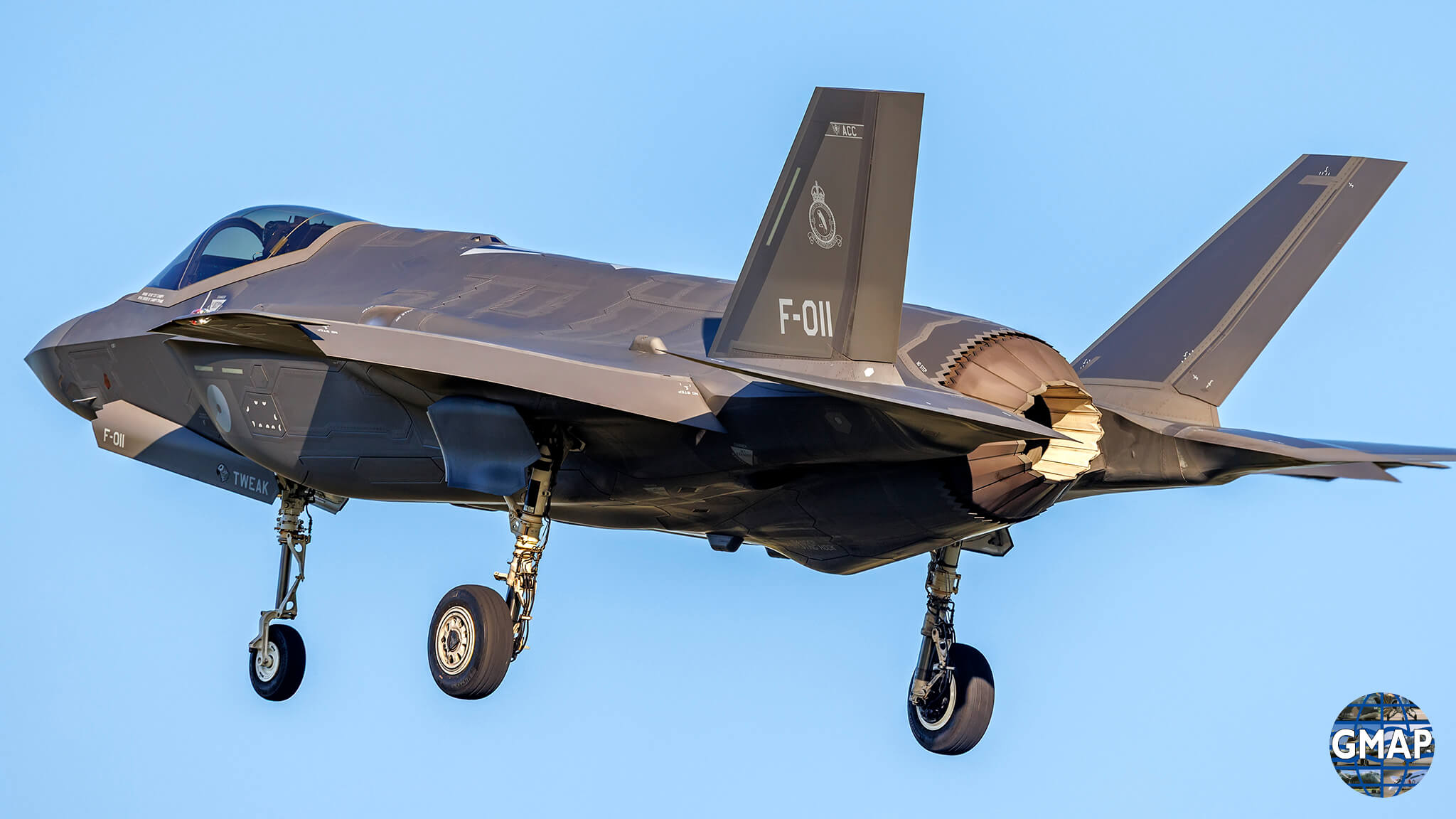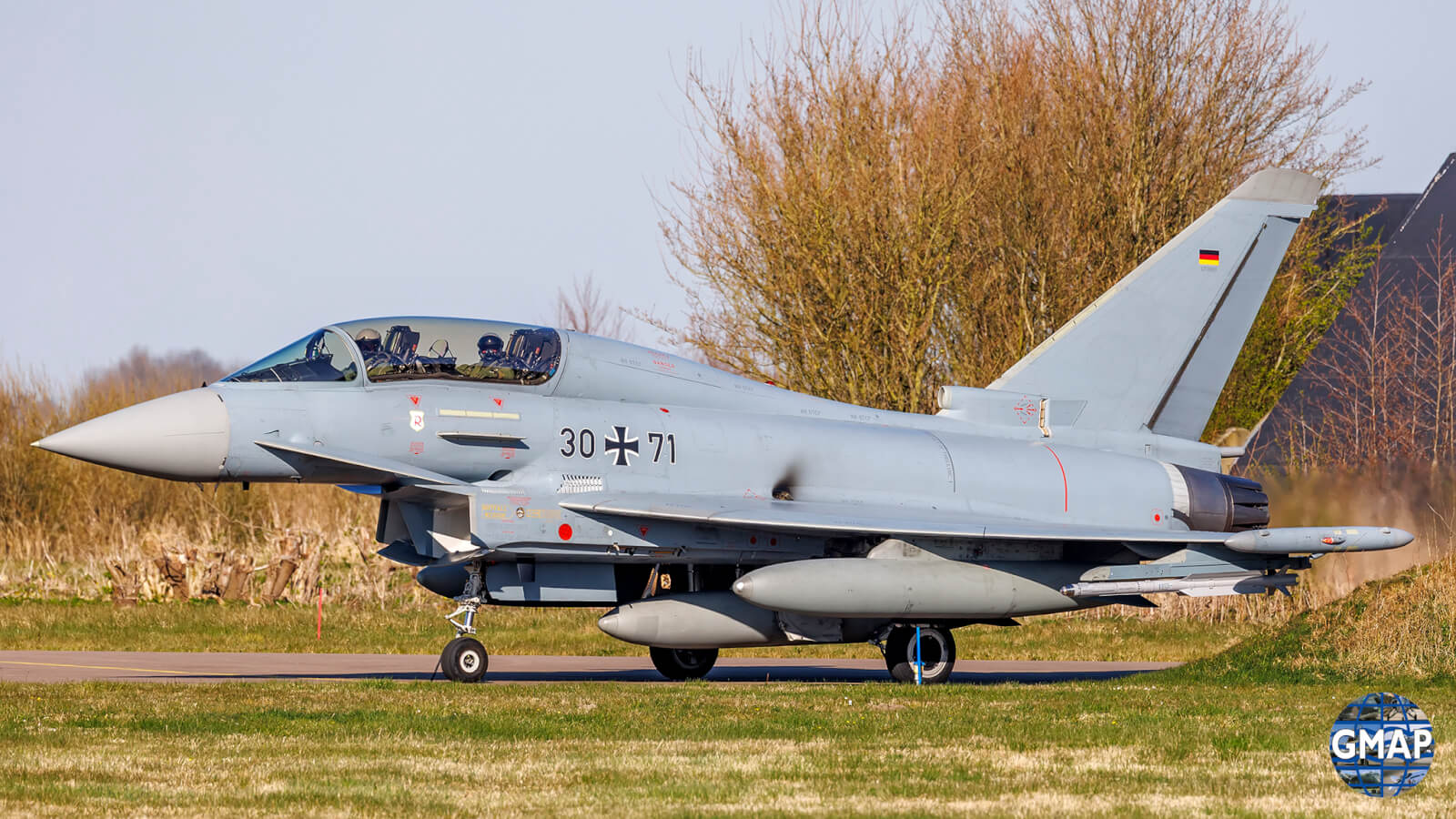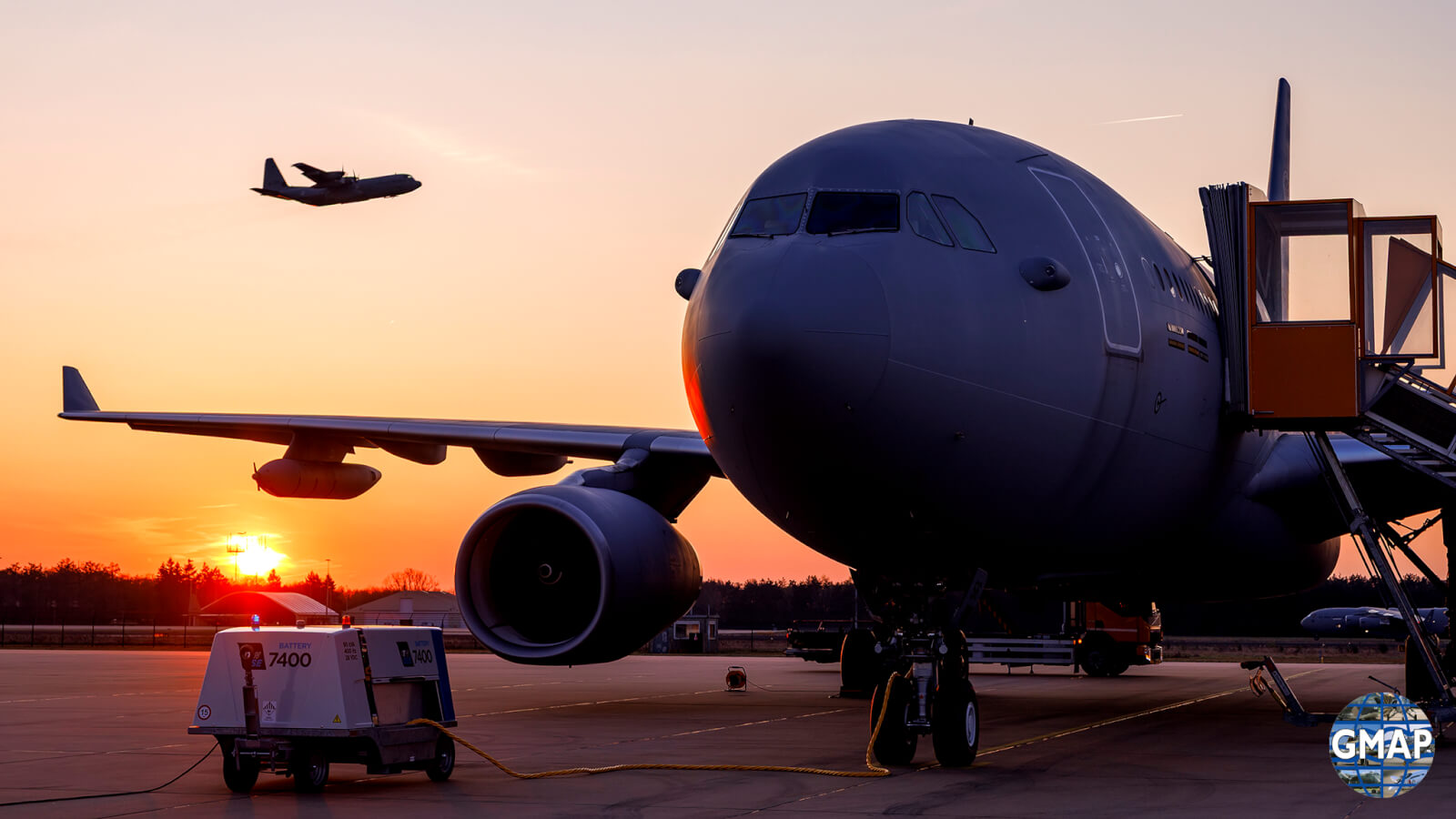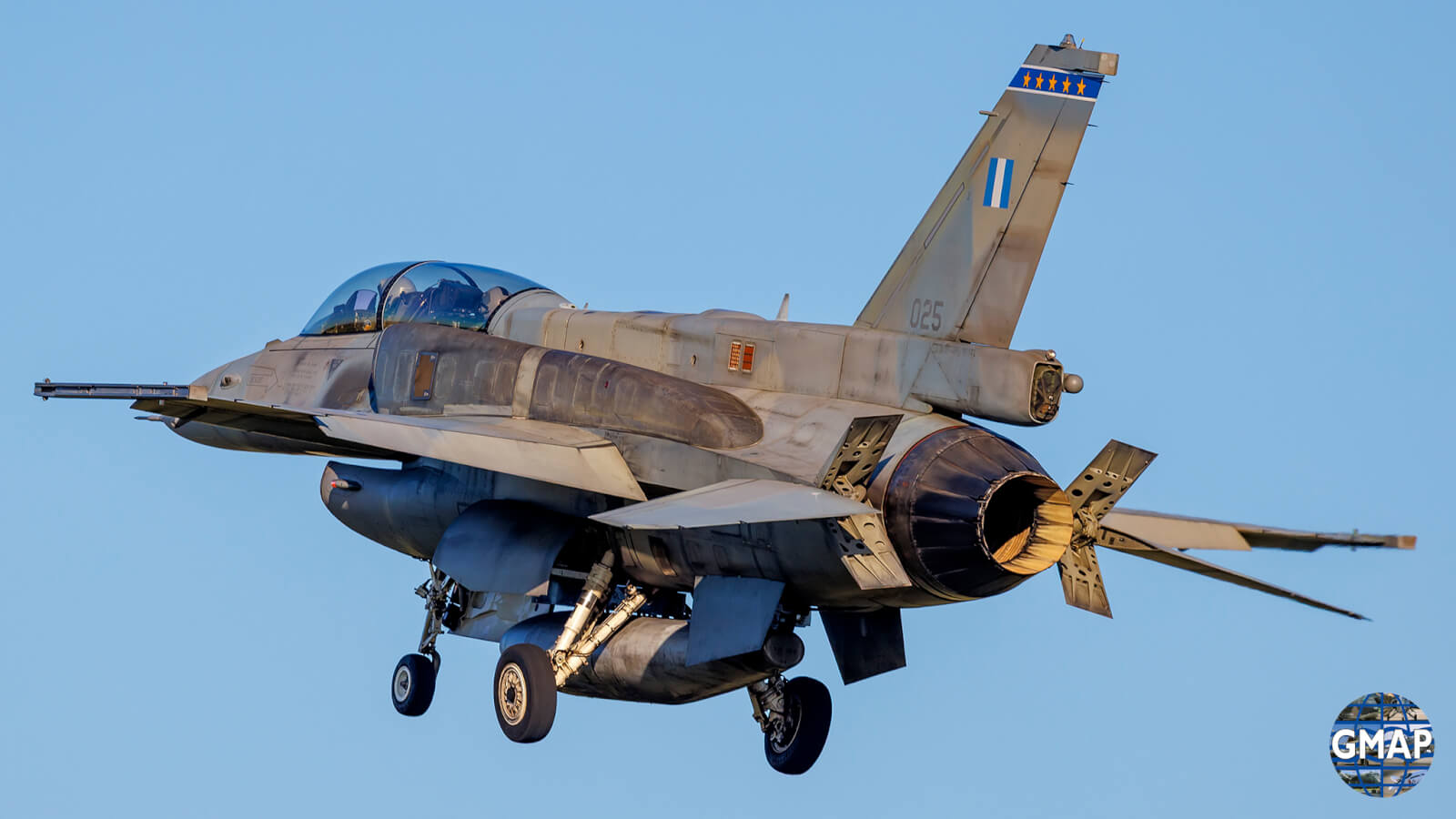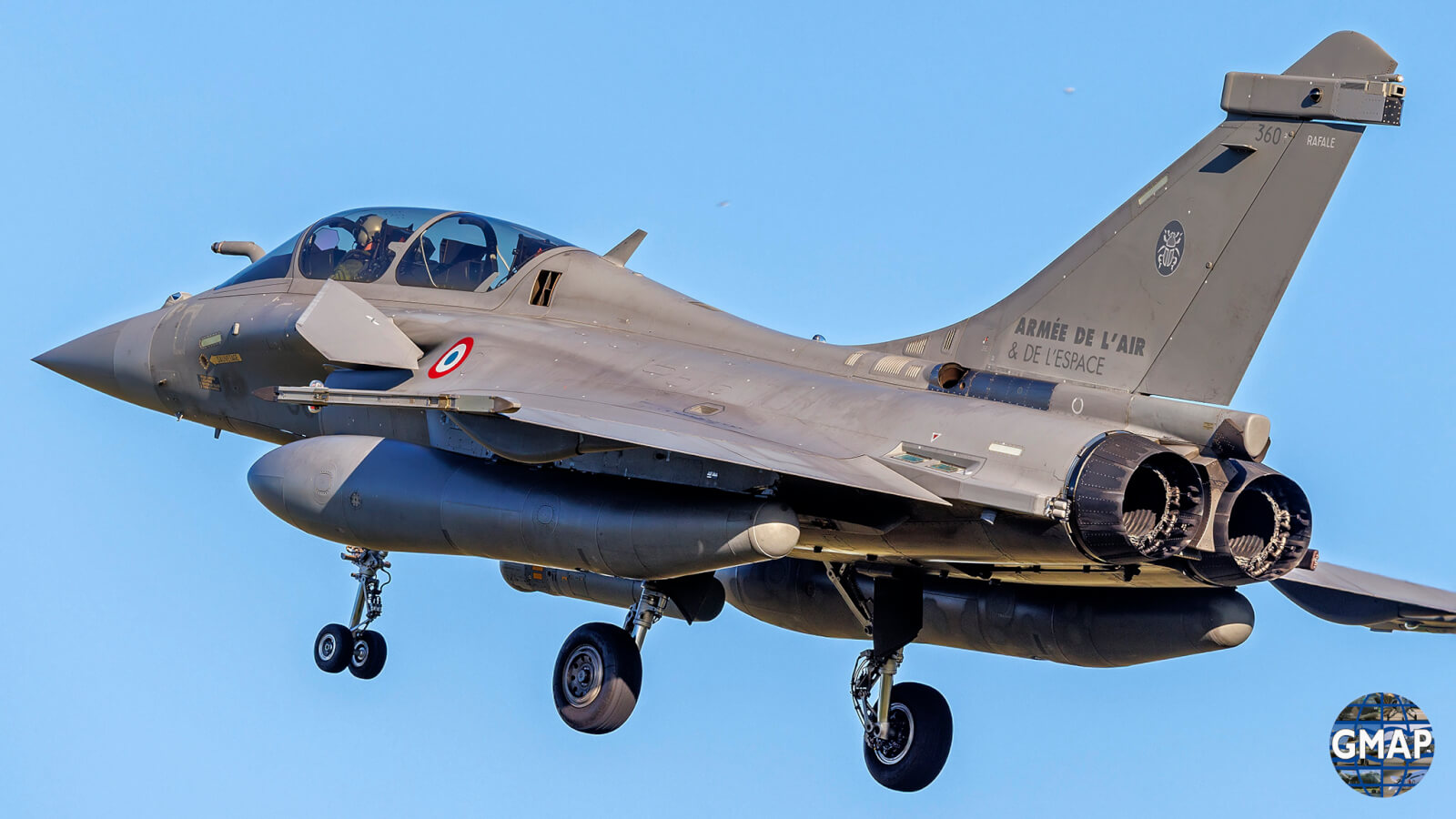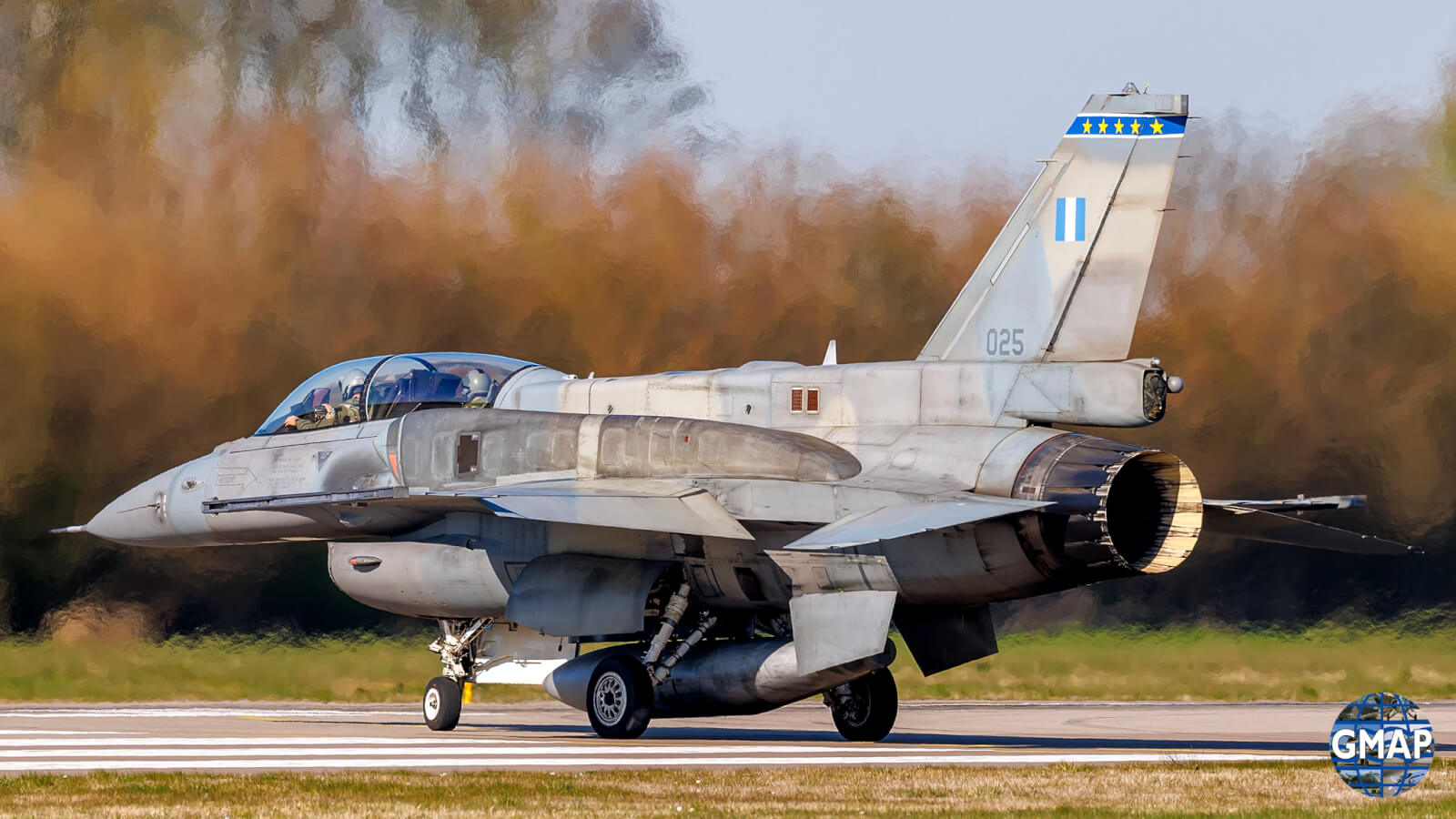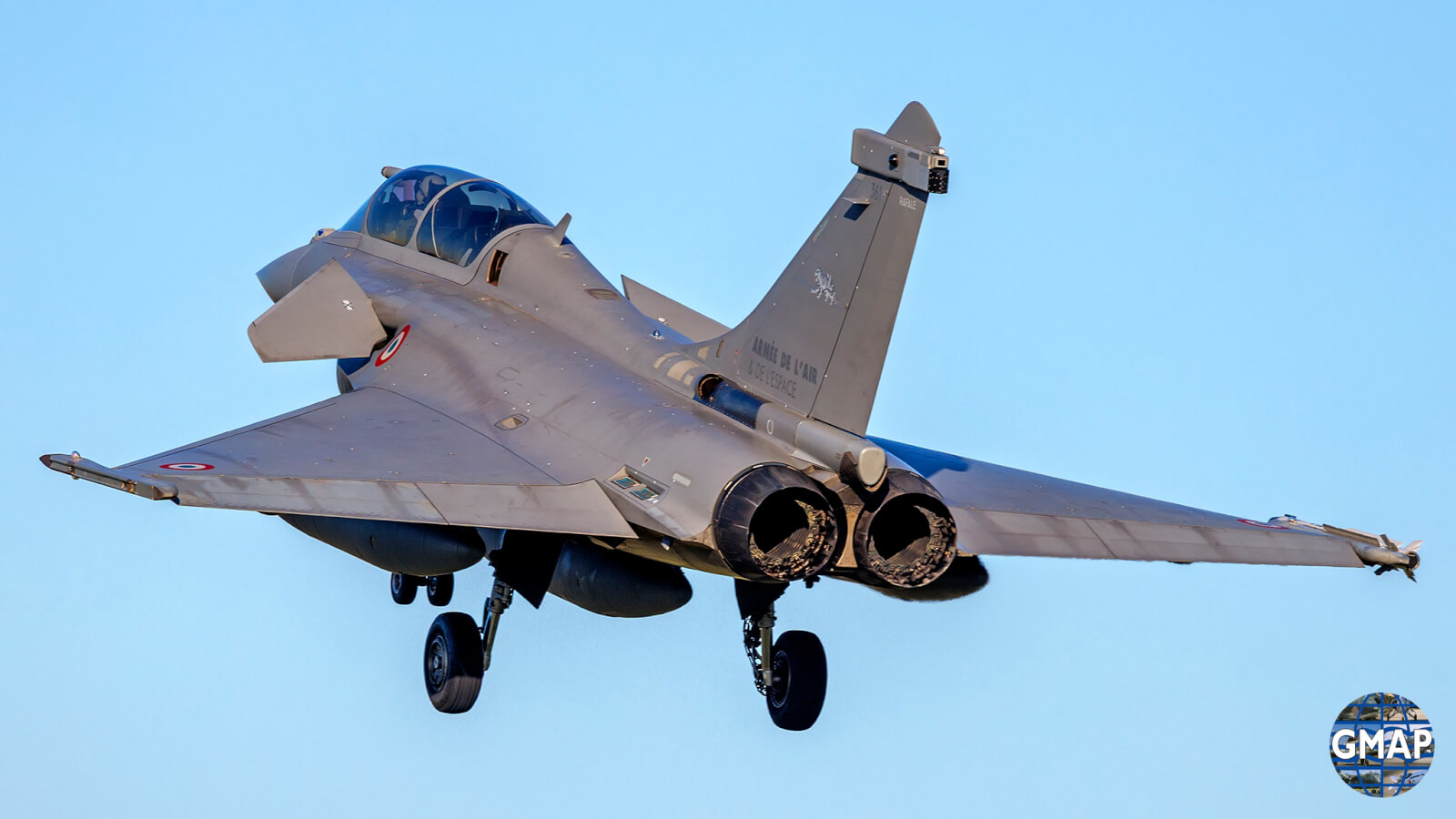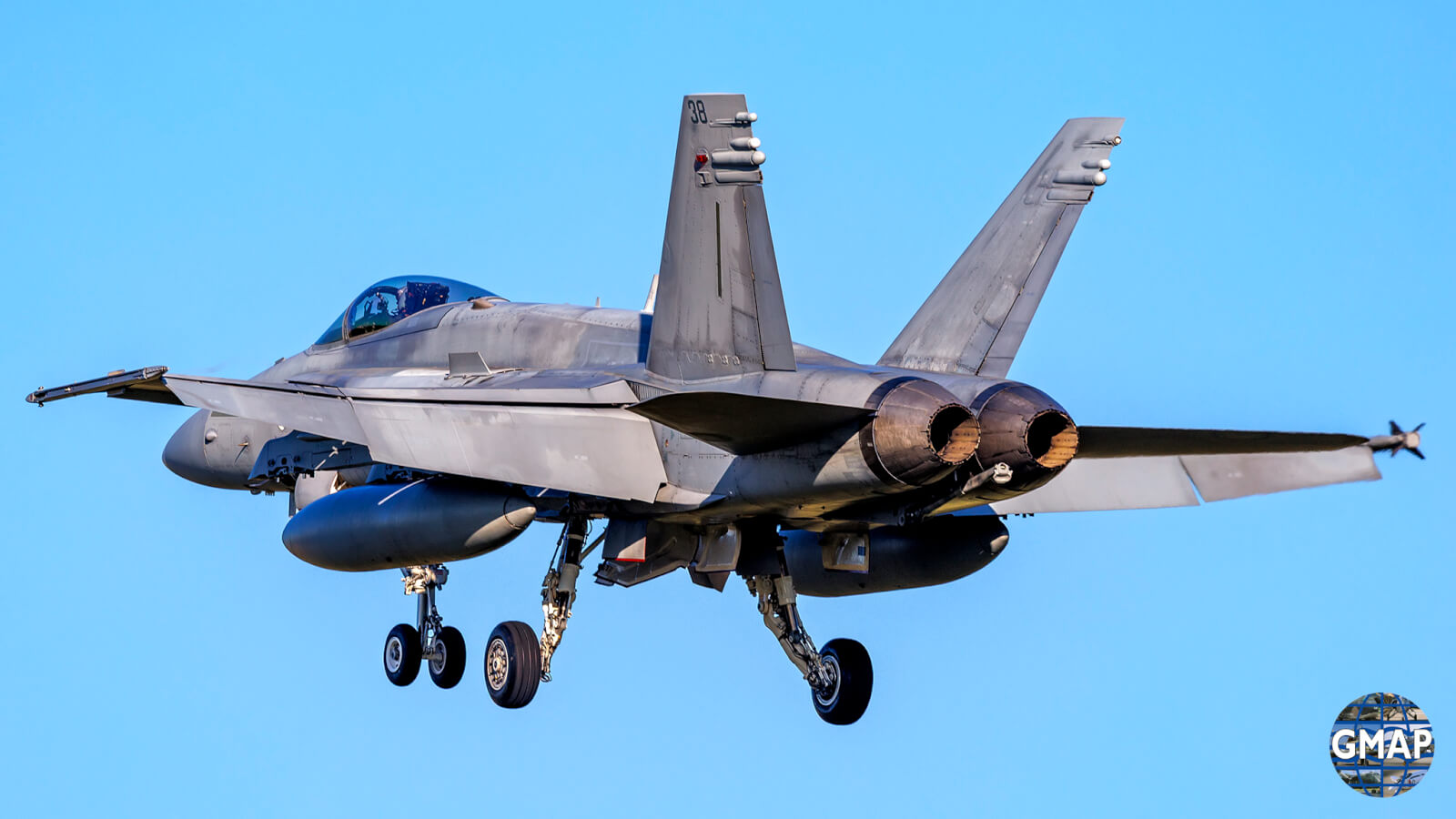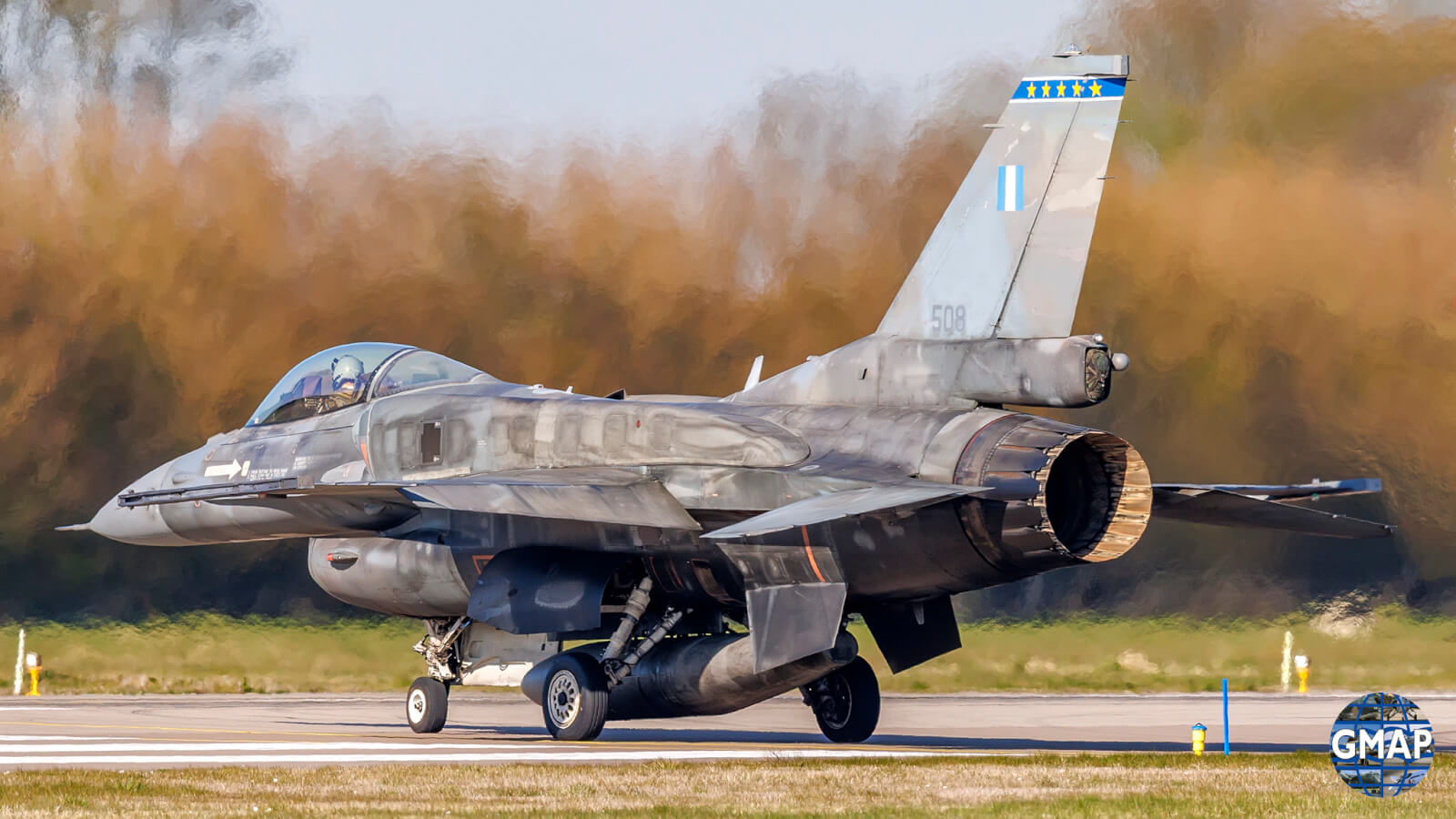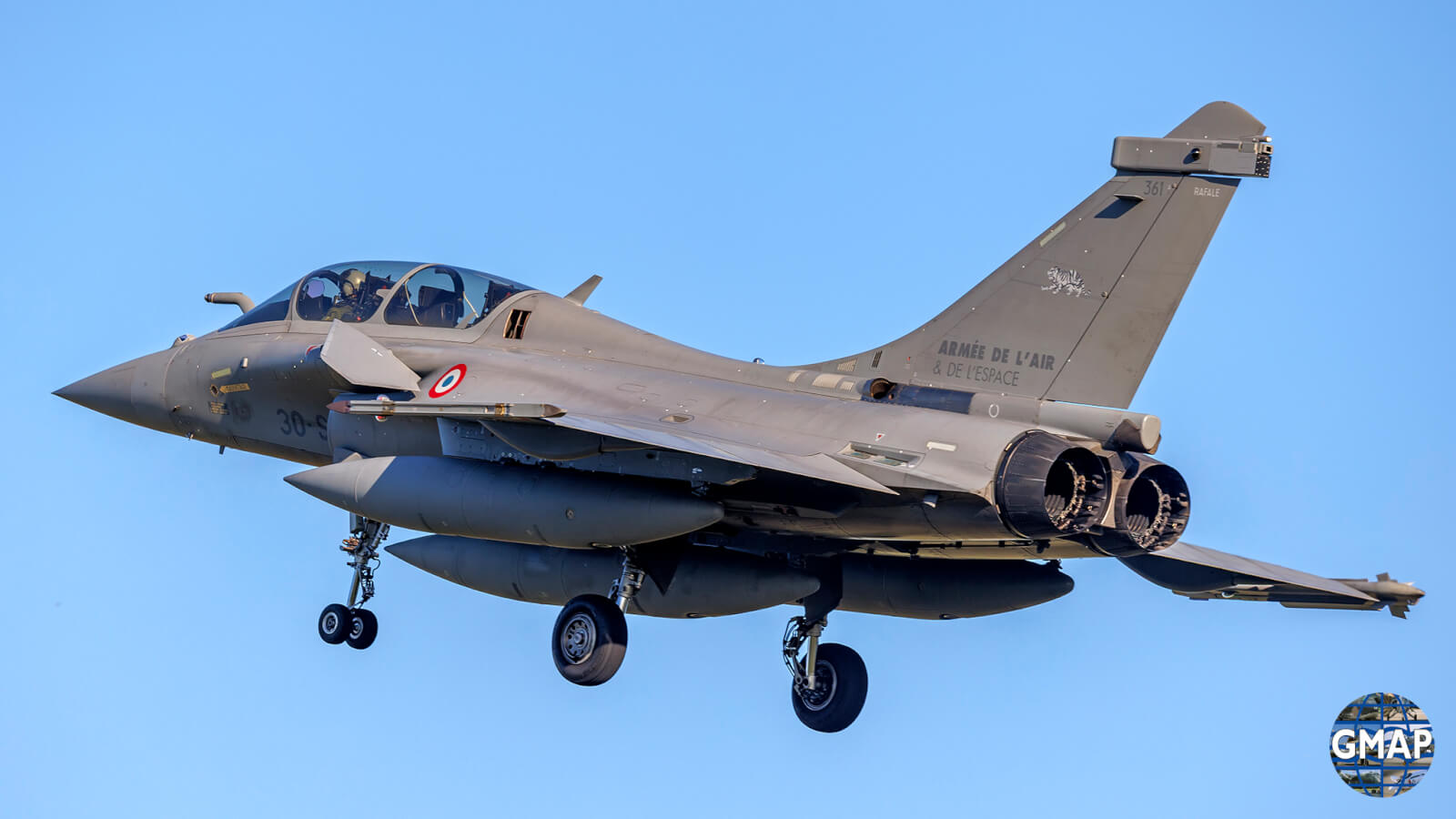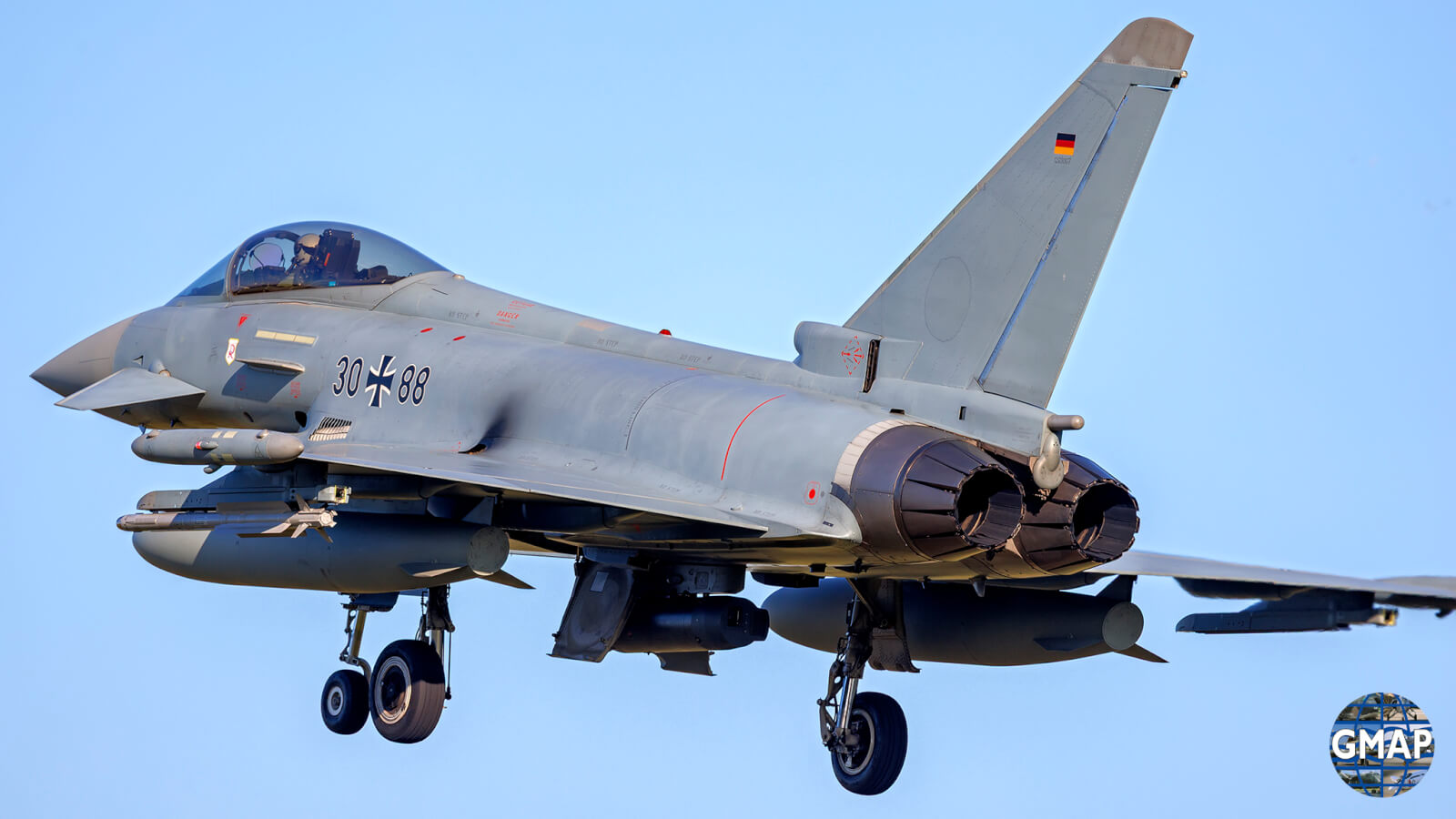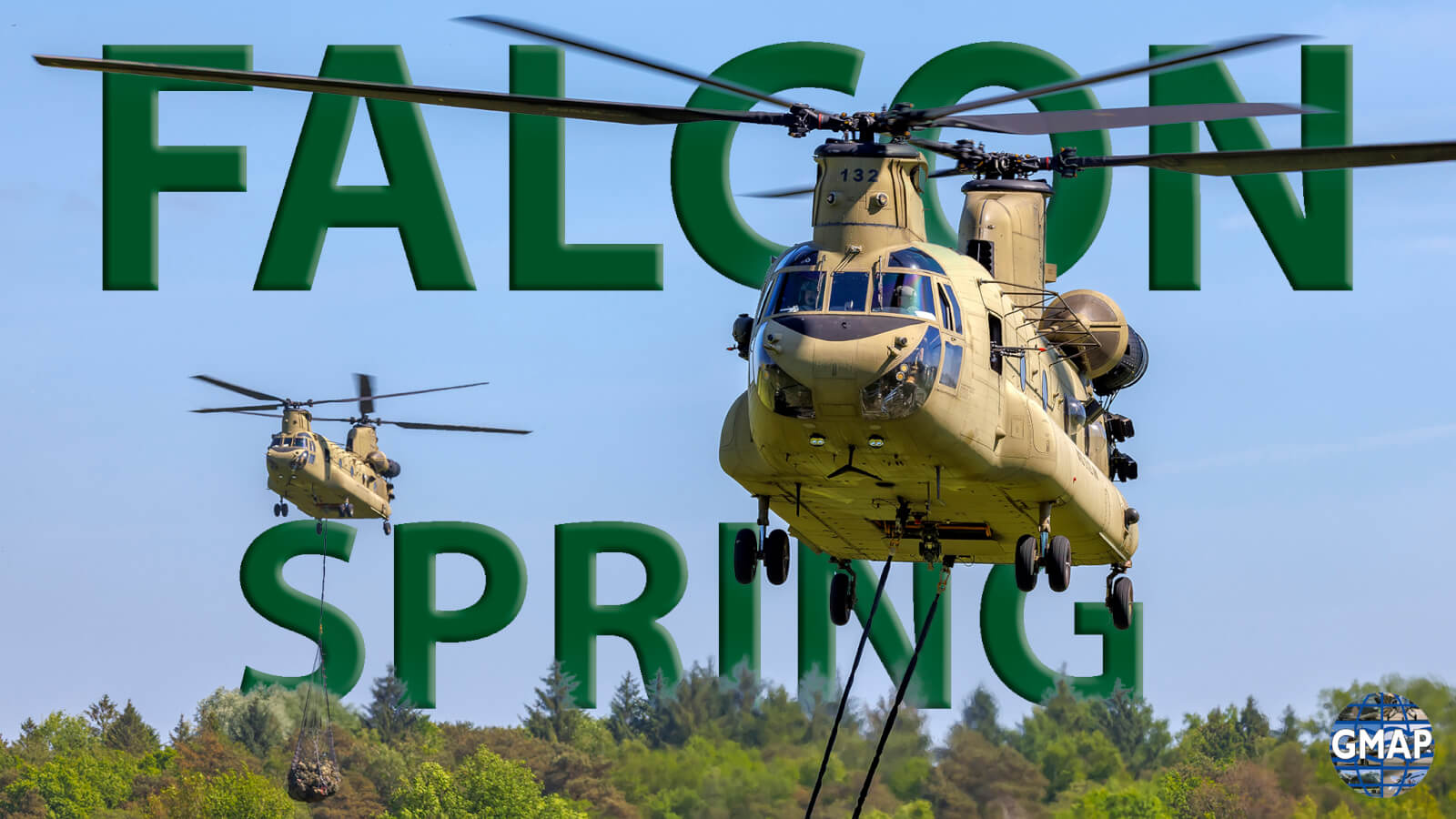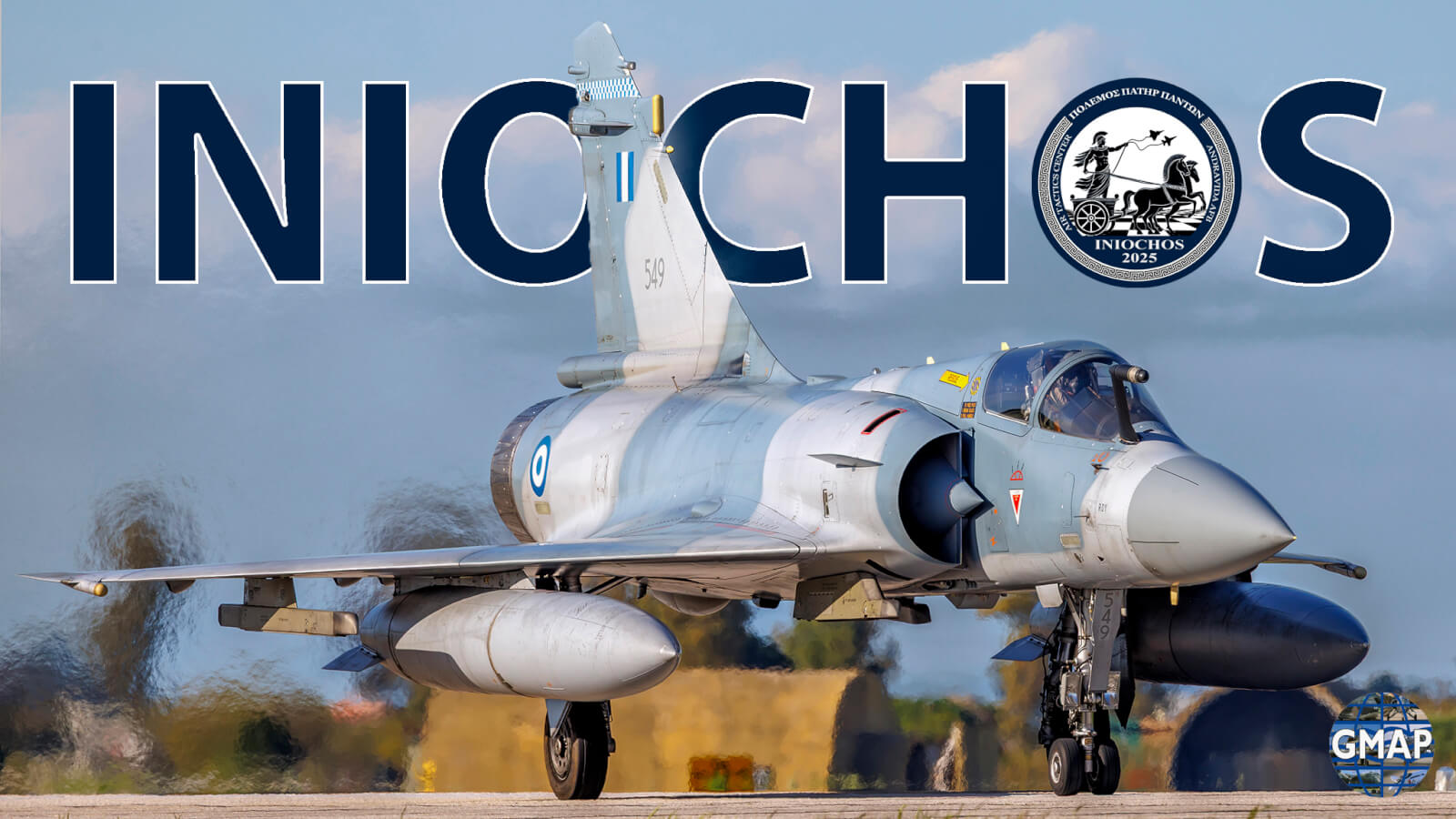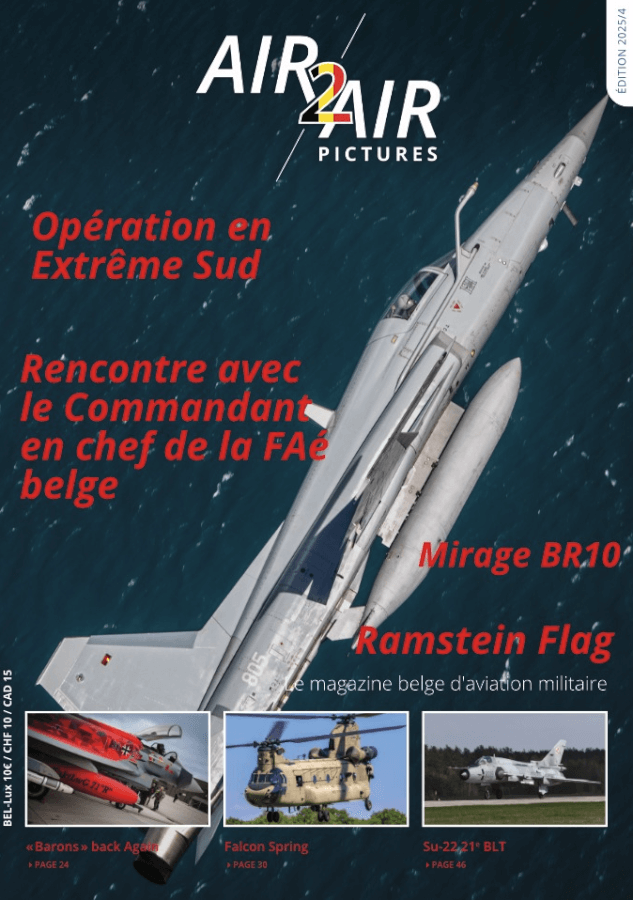 https://gmap.nl/wp-content/uploads/Screenshot-2025-09-22-220633.png
900
633
Editor_in_chief
https://gmap.nl/wp-content/uploads/GMAP-WEB-LOGO.png
Editor_in_chief2025-09-22 21:31:312025-10-07 16:13:59AIR 2 AIR MAGAZINE SEPTEMBER 25
https://gmap.nl/wp-content/uploads/Screenshot-2025-09-22-220633.png
900
633
Editor_in_chief
https://gmap.nl/wp-content/uploads/GMAP-WEB-LOGO.png
Editor_in_chief2025-09-22 21:31:312025-10-07 16:13:59AIR 2 AIR MAGAZINE SEPTEMBER 25Click on thumbnails to enlarge
MMU Tanker Role
The Multinational Multi-Role Tanker Transport (MMU) unit plays a crucial role in RAFL25. The MMU fleet, based on the Airbus A330 MRTT aircraft, provides essential air-to-air refueling, air transport, and air medical evacuation capabilities. These tankers are the backbone of Allied air power, enabling extended flight operations and enhancing the overall effectiveness of the exercise.
Significance of the MMU
- Air-to-Air Refuelling (AAR): Ensures that fighter jets and support aircraft can remain airborne for extended periods, allowing for continuous operations and increased mission reach.
- Air Transport (AT): Facilitates the rapid deployment of personnel, equipment, and humanitarian aid.
- Air Medical Evacuation (AE): Offers critical care in flight for injured personnel, maintaining NATO’s high standard of medical support.
During RAFL25, MMU tankers flew daily missions over the North Sea between the Netherlands and Denmark, refueling NATO fighter jets and enabling continuous air presence over contested zones.
Interoperability and Command Coordination
One of RAFL25’s major goals was enhancing interoperability among NATO forces. Common communication standards, data-sharing protocols, and joint command structures were tested during complex engagements. NATO’s Air Command and Control (C2) systems coordinated missions across borders, reinforcing the concept of a unified air force capable of rapid coalition response.
Special attention was given to:
- Common operating procedures
- Secure, encrypted data links (Link 16, MADL)
- Real-time mission retasking and adaptive strike packages
Cyber and Space Domains in Focus
RAFL25 also acknowledged the growing influence of cyber and space domains in modern warfare:
- Cyber Defence Units simulated adversarial attacks on radar, logistics, and C2 networks, prompting defensive countermeasures.
- Space assets, including satellite communications and ISR satellites, provided strategic overwatch and targeting data, underscoring NATO’s integration of space capabilities into traditional warfare.
Implications for Future NATO Operations
RAFL25 sets a new benchmark for NATO joint training exercises. As threats grow more complex, exercises like these are vital for adapting operational doctrine and improving readiness. The inclusion of new technologies, combined-domain strategies, and multinational teamwork ensures NATO remains a credible deterrent against any adversary.
Future iterations of Ramstein Flag are expected to incorporate:
- Simulated cyber-kinetic warfare integration
- Increased use of autonomous systems
- Collaboration with non-NATO partners for global reach
Ramstein Flag 25 is a testament to NATO’s unwavering commitment to collective defence, operational excellence, and technological advancement. By blending live-fly missions with cyber, space, and multi-domain operations, RAFL25 not only strengthens Allied airpower but also reinforces unity and adaptability in the face of emerging threats.
Click on thumbnails to enlarge
Key Objectives and Scenarios
- Counter Anti-Access/Area Denial (C-A2AD)
This involves neutralizing adversary military infrastructure to deter and remove limitations on friendly forces’ movement. The exercise includes scenarios where participants must neutralize long-range missile systems and execute ballistic missile defence strategies. Simulated electronic warfare and radar jamming operations were also incorporated to replicate contested environments. - Integrated Air and Missile Defence (IAMD)
This focuses on defending against cruise and ballistic missile threats, ensuring the protection of forward airbases and creating no-fly zones for adversaries. IAMD scenarios involved coordination between ground-based missile defense systems, airborne early warning assets, and fast jet responses. - Agile Combat Employment (ACE)
ACE involves dispersing forces across multiple bases, allowing for rapid regrouping and projection of airpower at short notice. This capability is crucial in today’s evolving security environment. During RAFL25, fighter jets operated from multiple temporary Forward Operating Locations (FOLs) in the region, simulating operations under degraded or denied conditions. - Multi-Domain Integration
RAFL25 requires participants to practice multi-domain warfare by integrating elements from land, maritime, cyber, and space operations. Scenarios include sharing real-time intelligence, space-based surveillance, cyber threat detection, and coordinating joint responses to aggressive “opponents.” This integration ensures that all warfighting domains are fully utilized and seamlessly share information.
Emerging Technologies and Innovation
RAFL25 served as a testing ground for emerging technologies and advanced platforms:
- Artificial Intelligence (AI): AI tools supported threat analysis and decision-making during live-fly missions, enhancing response times and reducing cognitive load for pilots and mission commanders.
- Unmanned Aerial Systems (UAS): The use of MQ-9 Reapers and other UAS platforms highlighted the increasing role of drones in ISR (Intelligence, Surveillance, and Reconnaissance), target designation, and even electronic warfare.
- 5th and 4.5th Generation Fighter Integration: Pilots trained on tactics for mixed-generation formations, with stealth F-35s coordinating strikes while fourth-gen fighters provided escort and suppression of enemy air defenses (SEAD).
Participating Airplanes
The exercise featured a diverse array of aircraft and units from various NATO nations, showcasing both technological capabilities and Allied interoperability:
- United States: F-35A Lightning II fighters from the 48th Fighter Wing (USAFE Lakenheath, UK), KC-135R Stratotankers from the 100th Air Refueling Wing (USAFE Mildenhall, UK), and the 19th Electronic Warfare Squadron (USAFE-AFAFRICA Warfare Center, Ramstein Air Base, Germany).
- Netherlands: F-35 Lightning IIs, MQ-9 Reapers, NH90 helicopters, and the naval frigate HNLMS Tromp.
- Other NATO Nations: Finnish F-18 Hornets, German Eurofighter Typhoons, Hellenic Air Force F-16s, Swedish Gripens, and French Rafales operated out of Leeuwarden Air Base with two missions a day: the first at 17:00 and the second around 21:00 during night operations.
Click on thumbnails to enlarge

